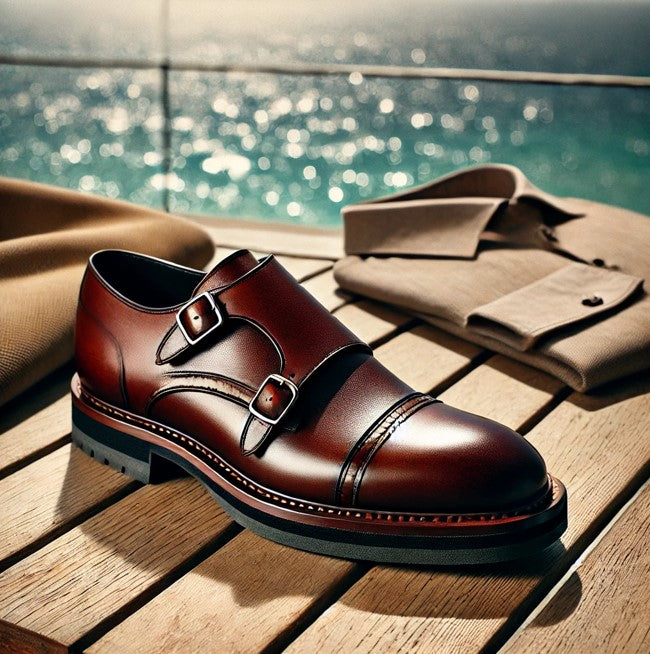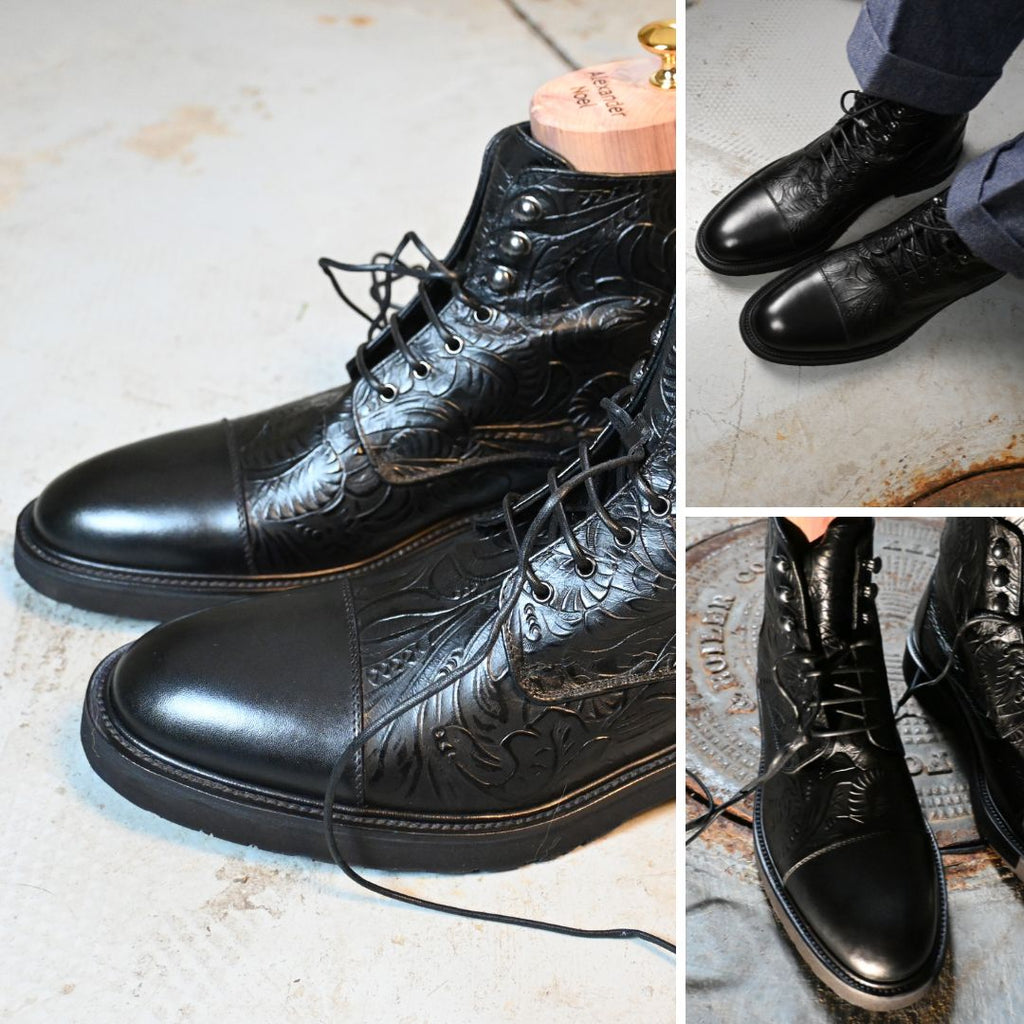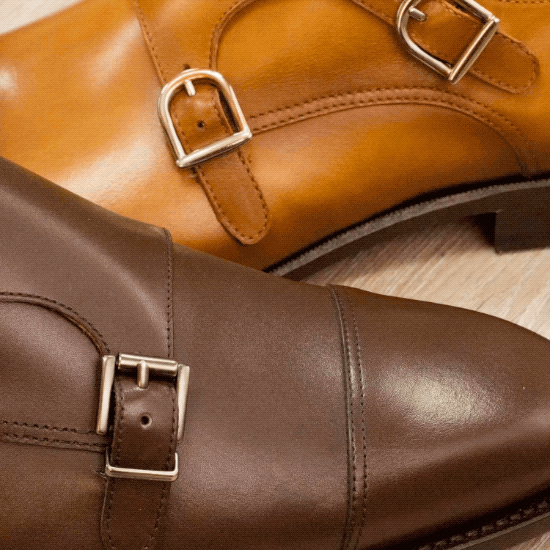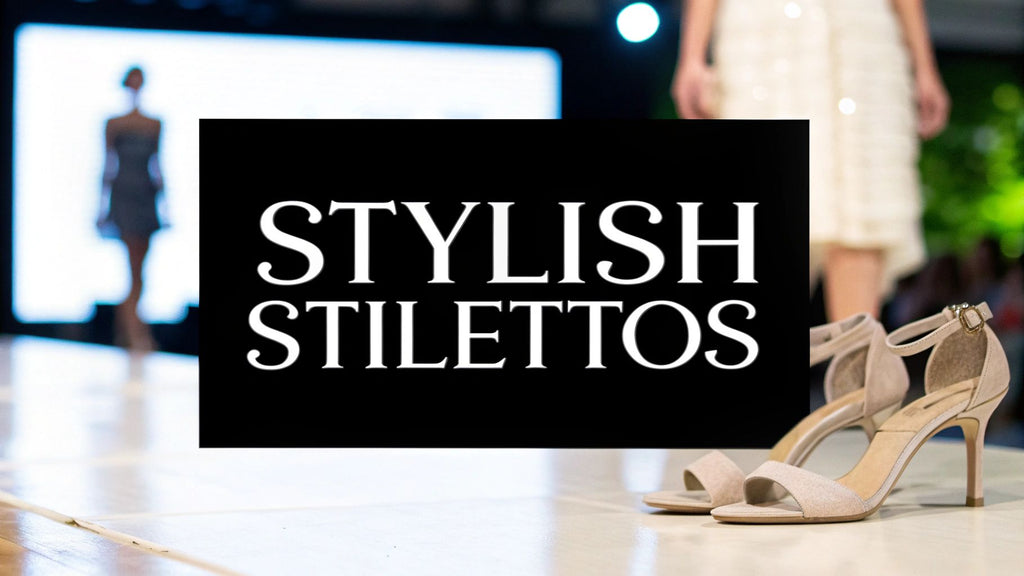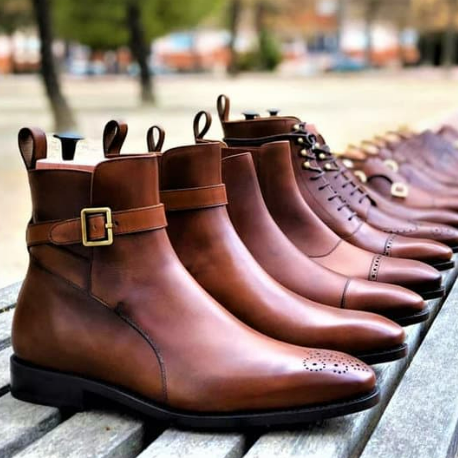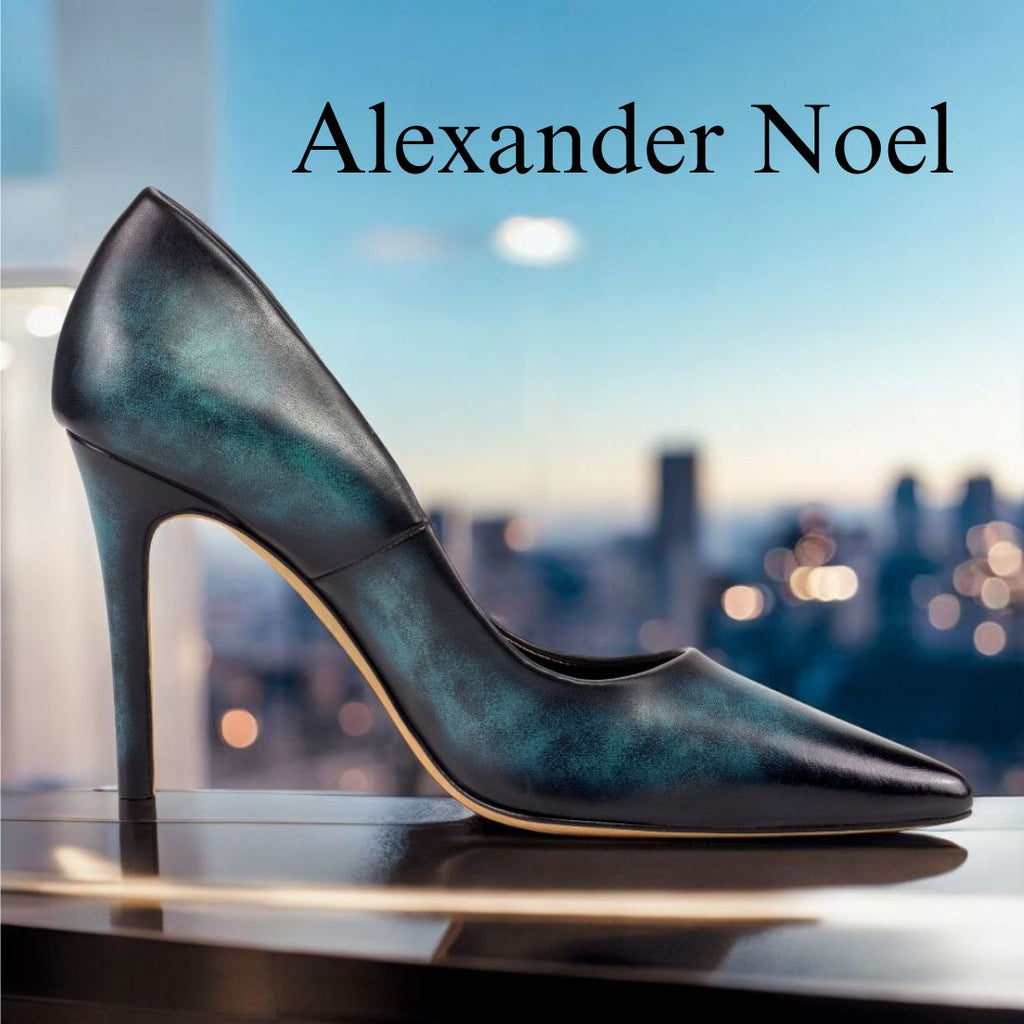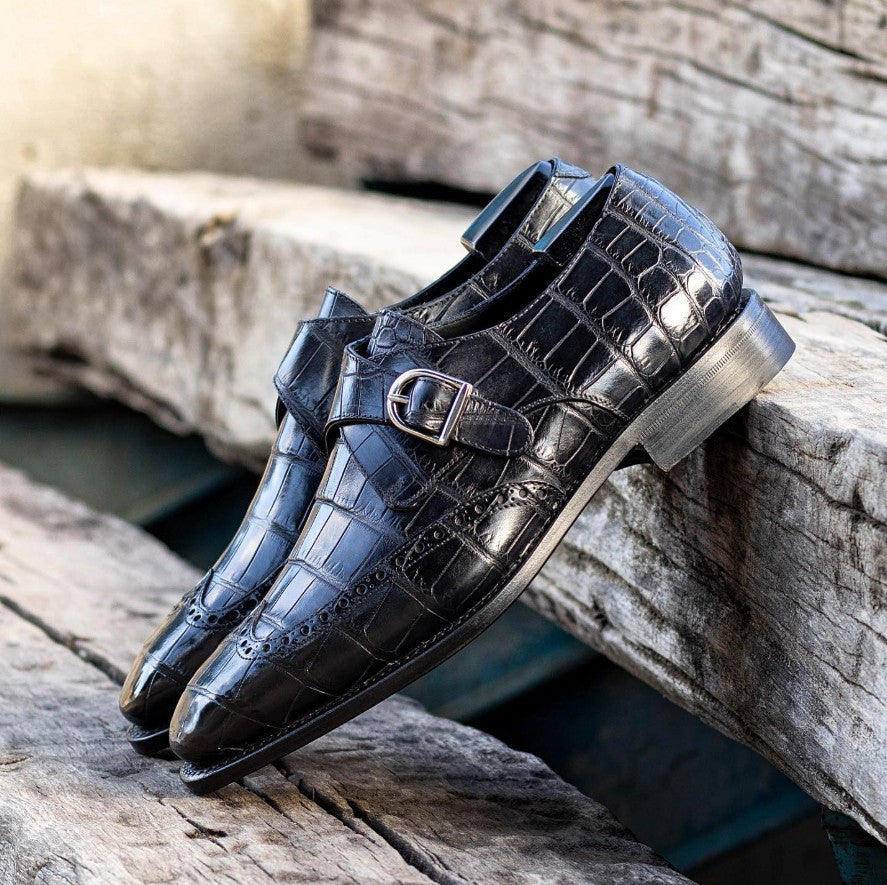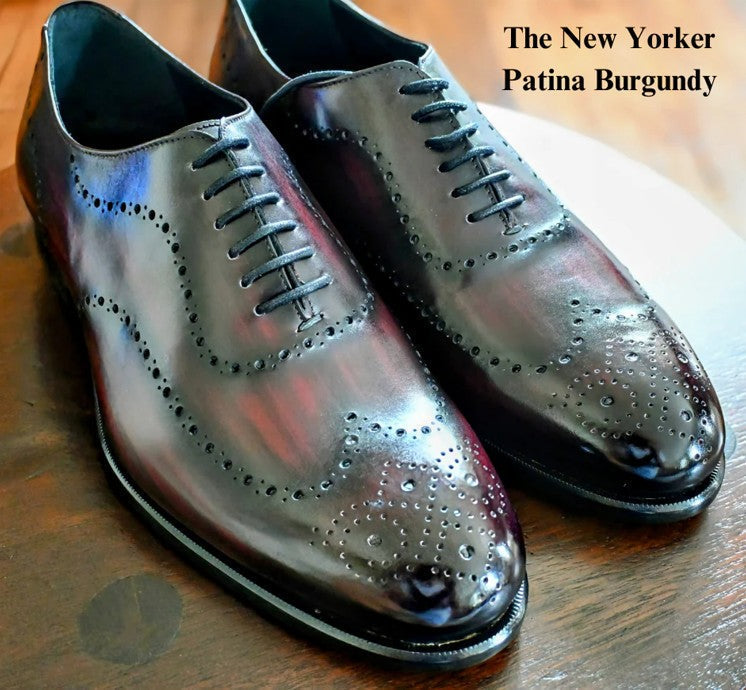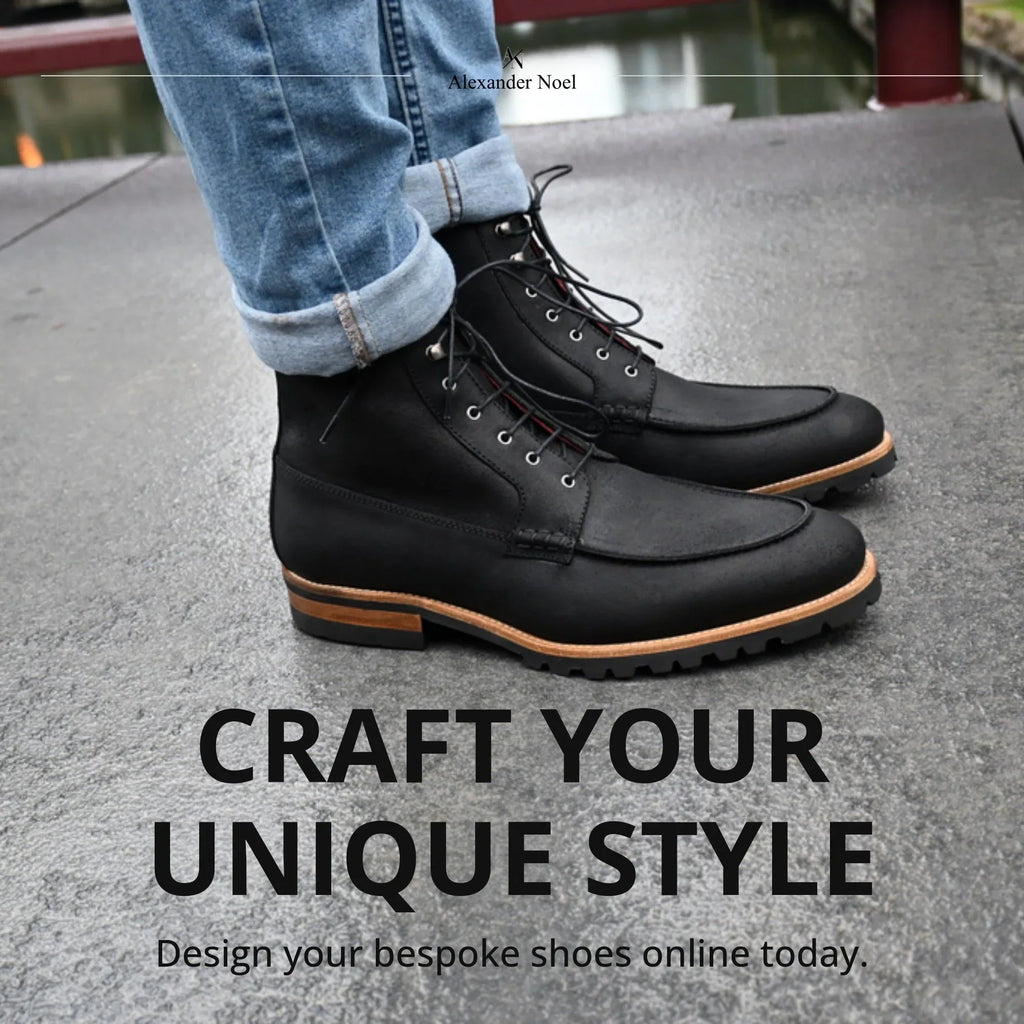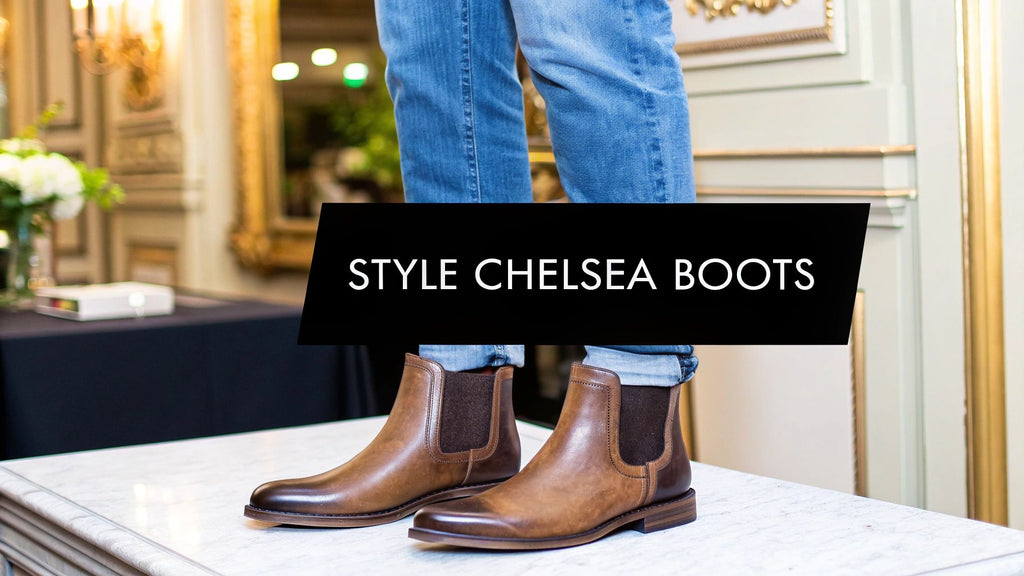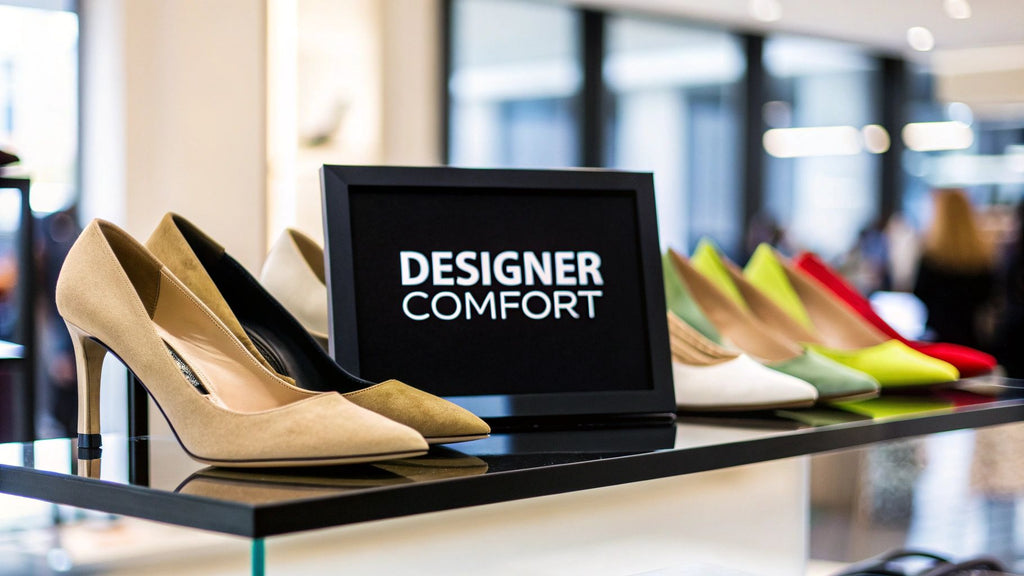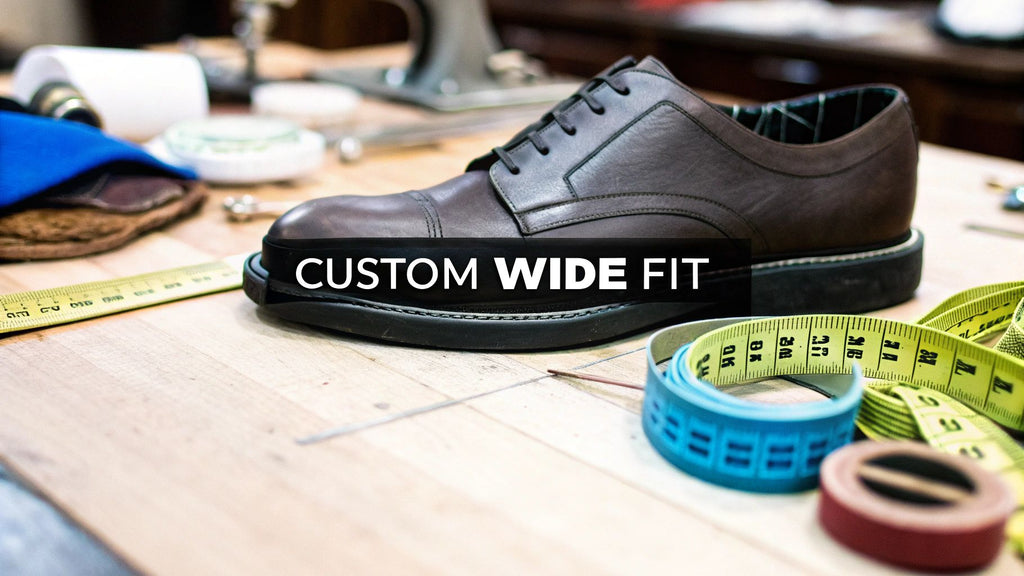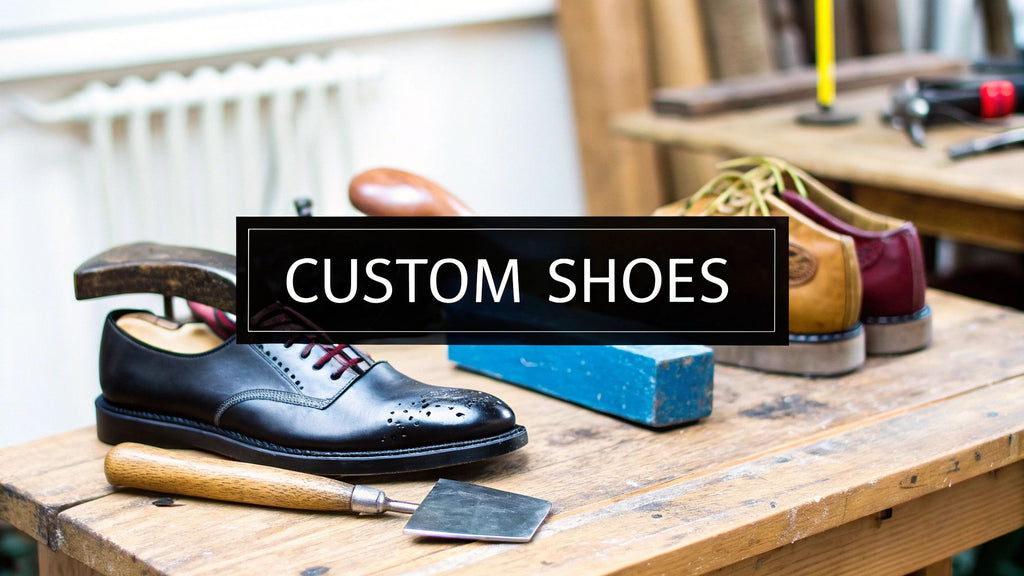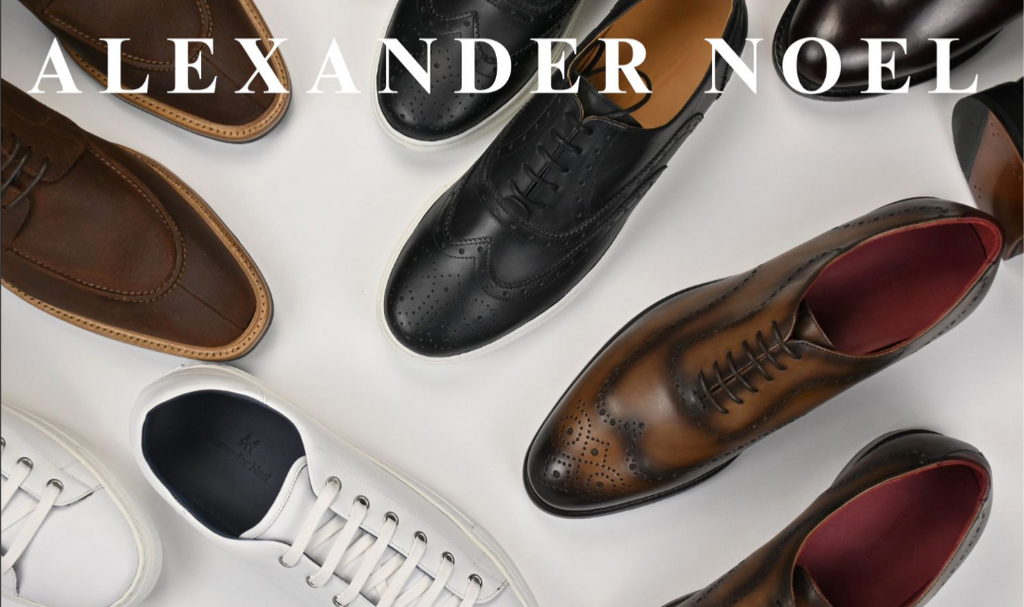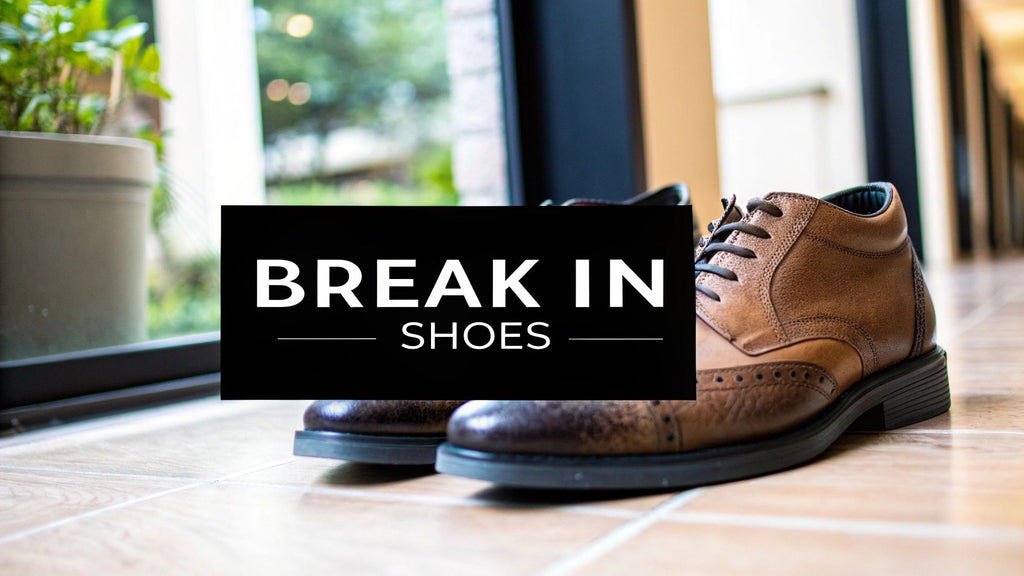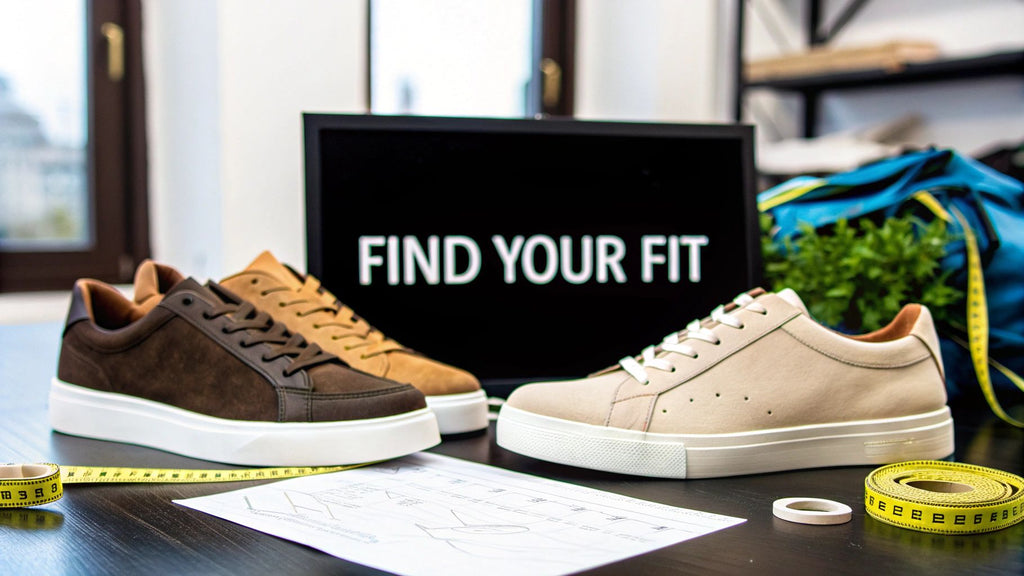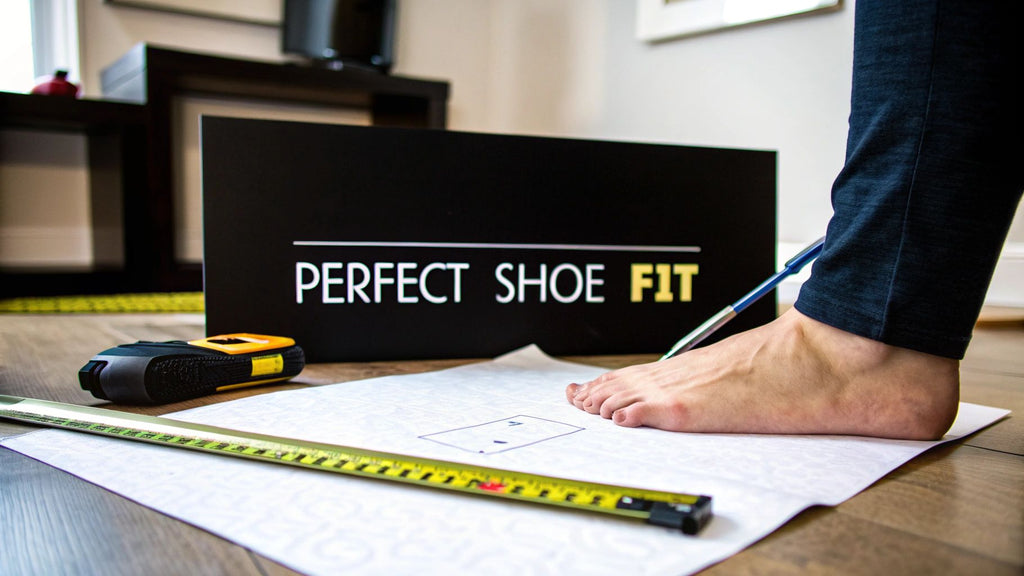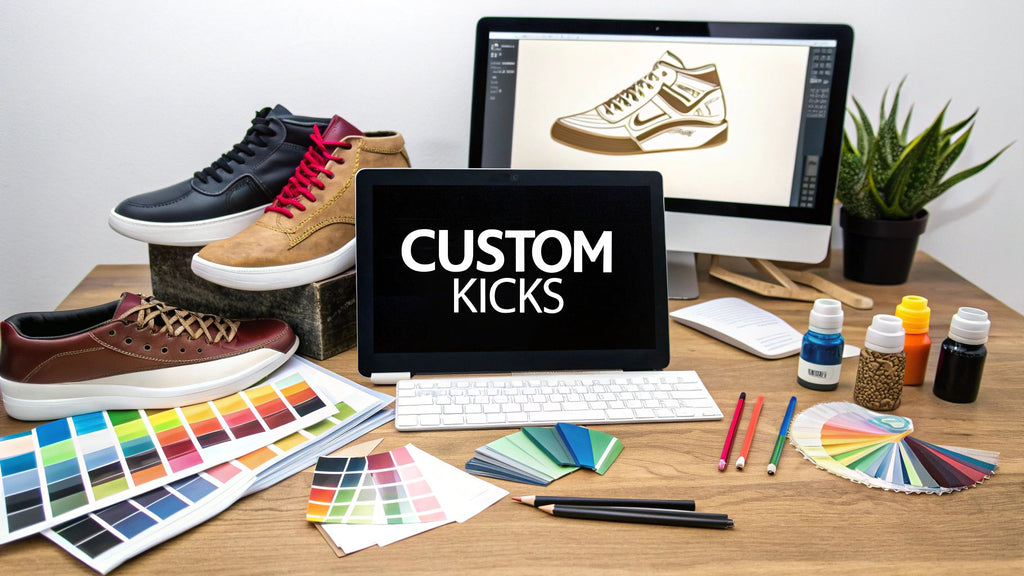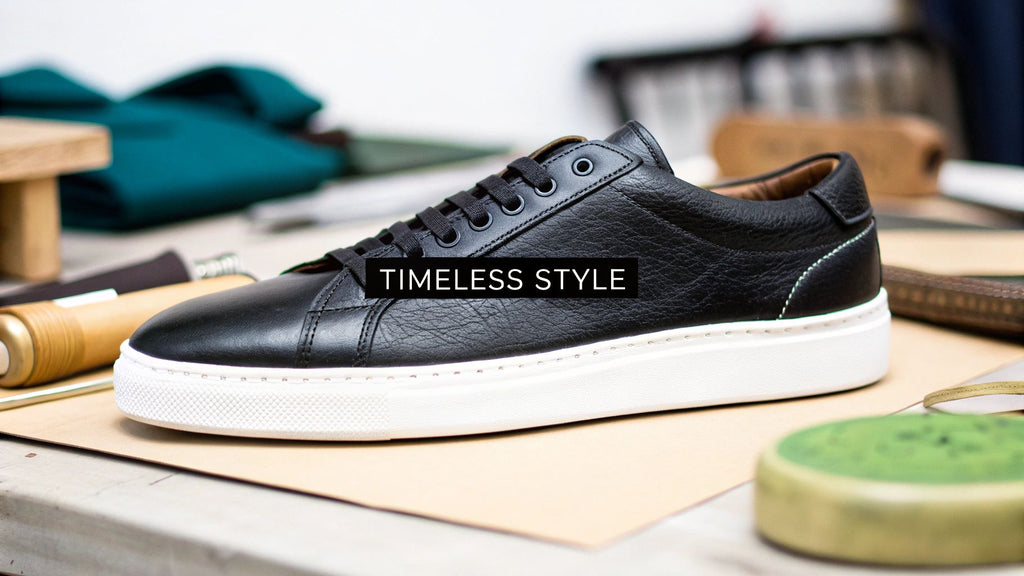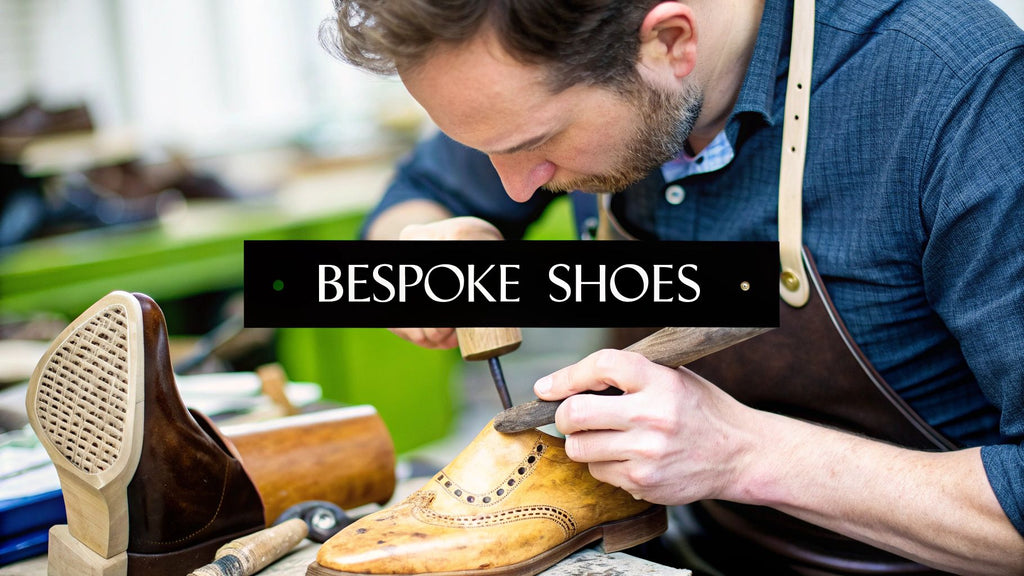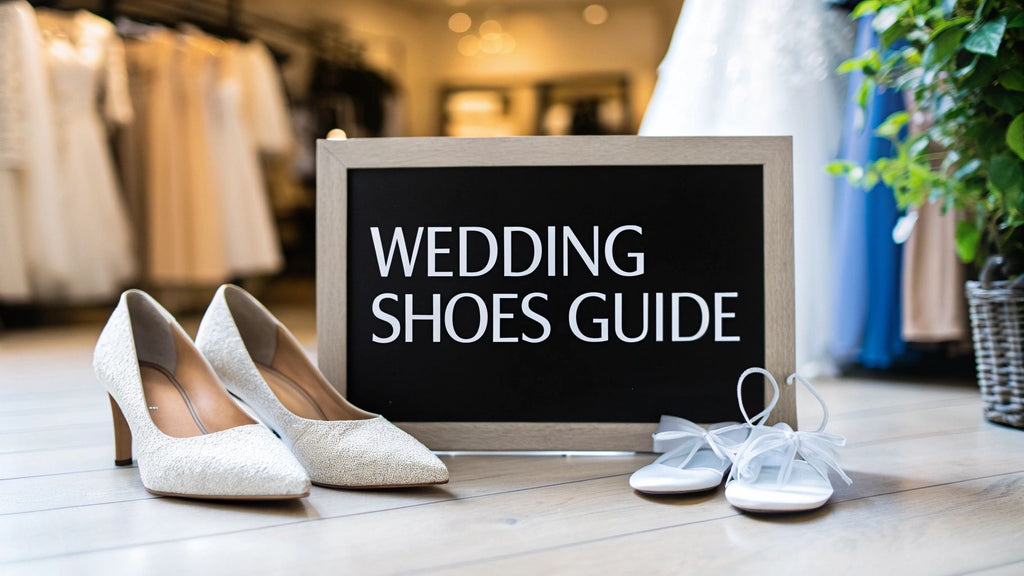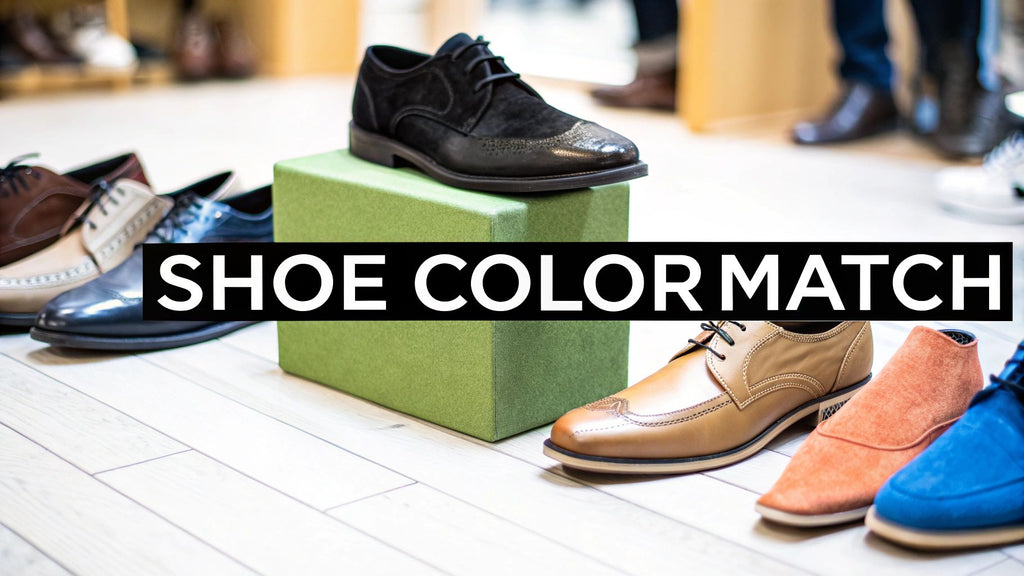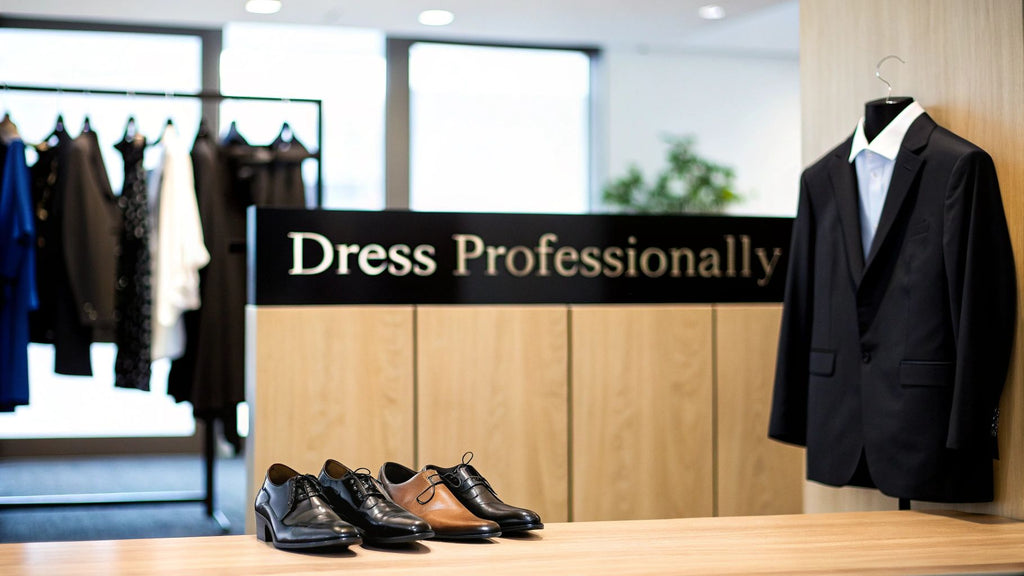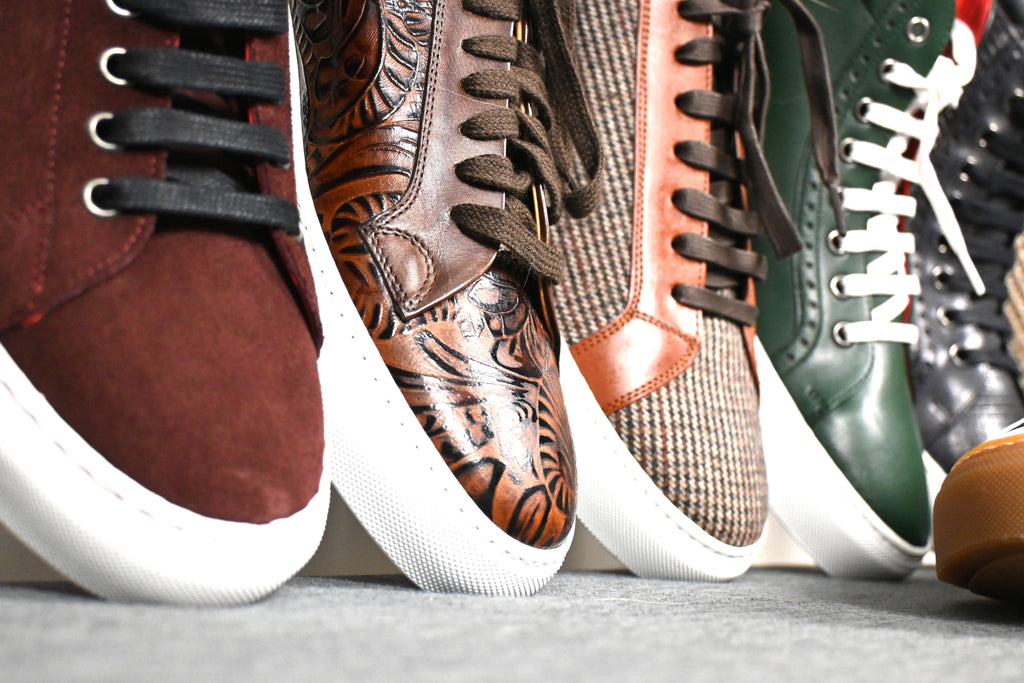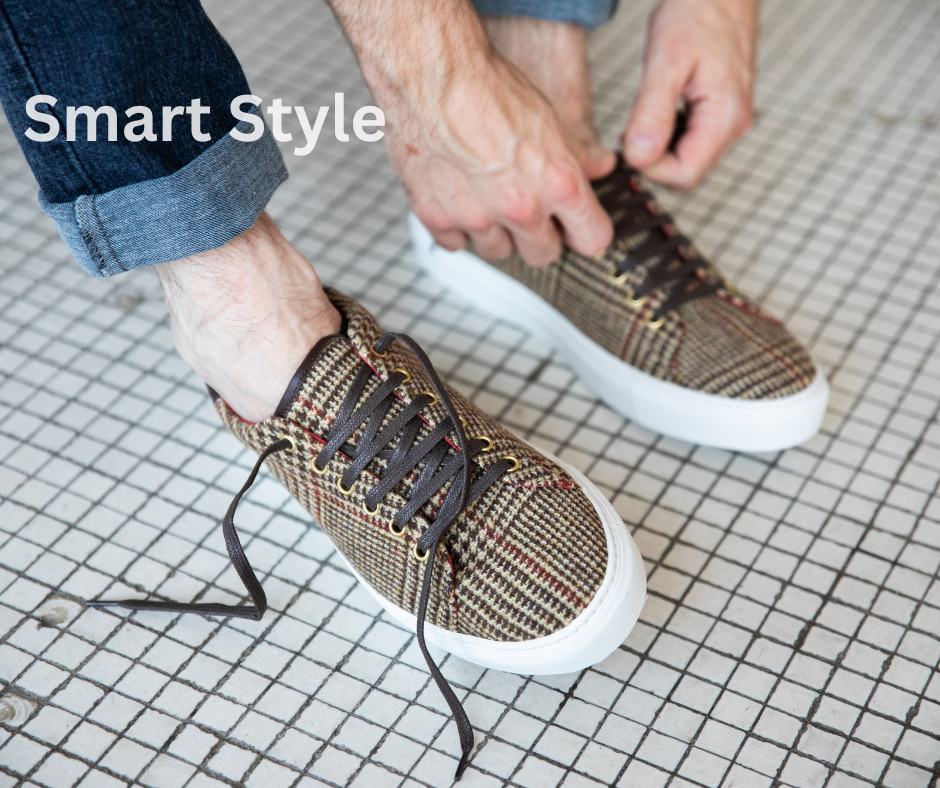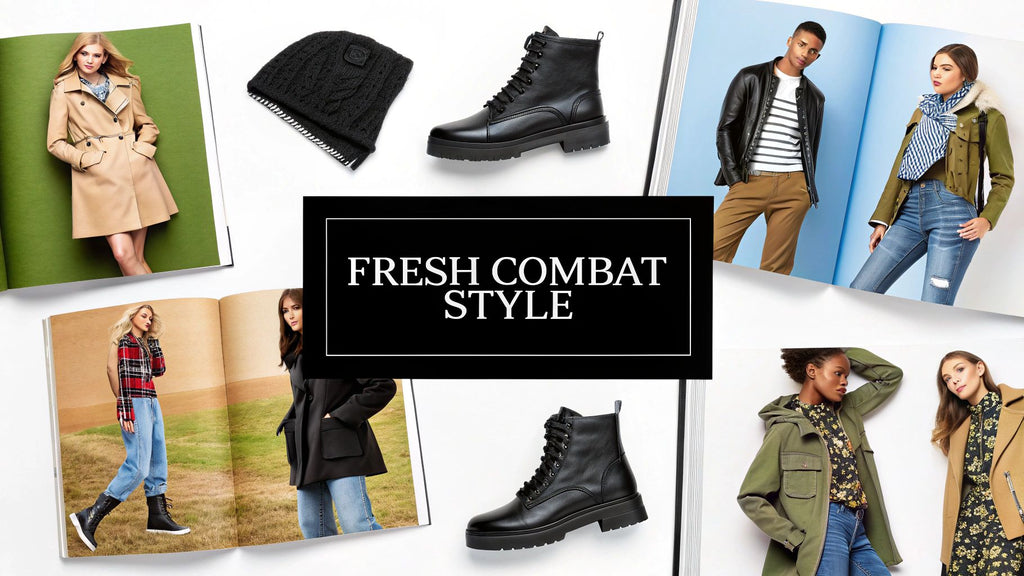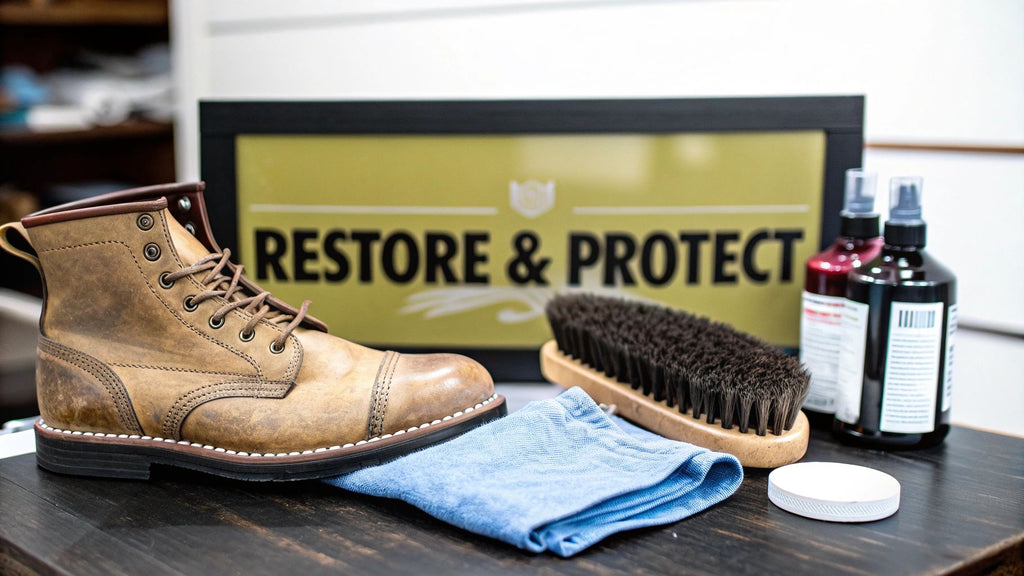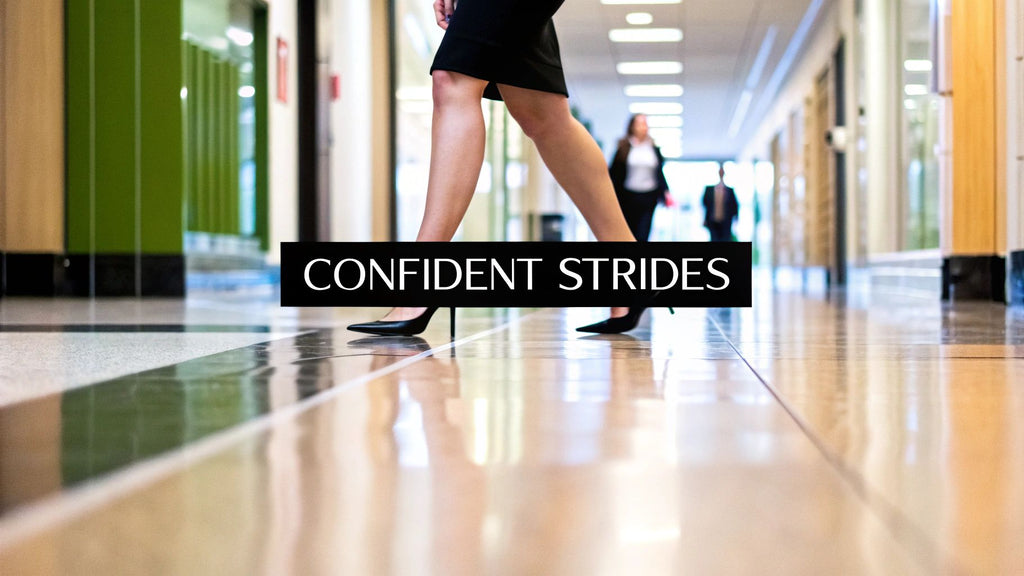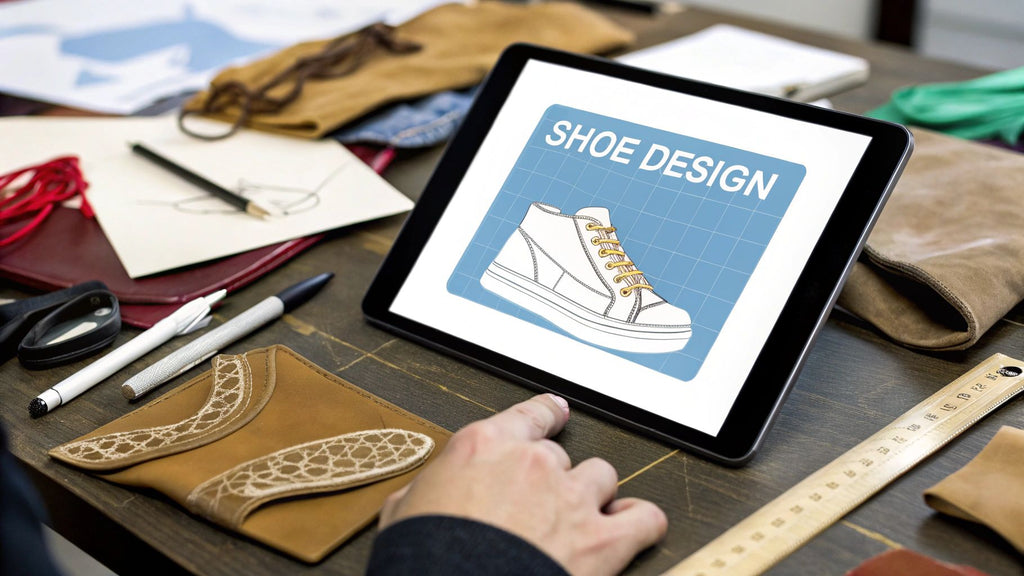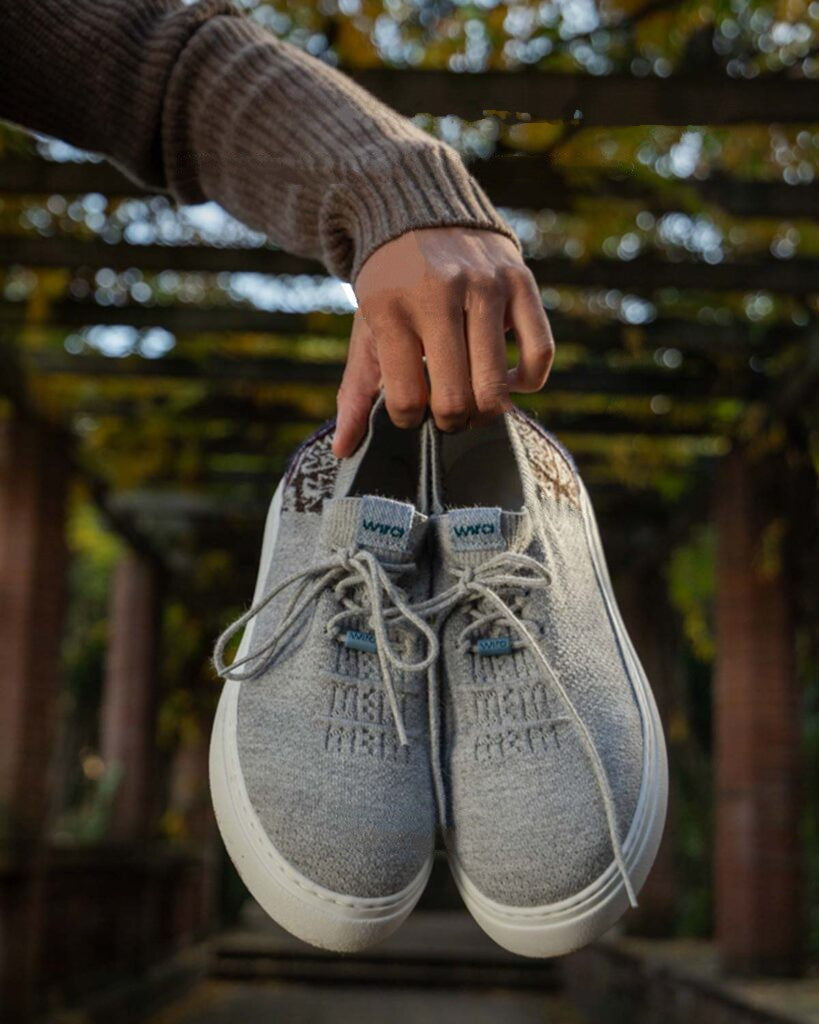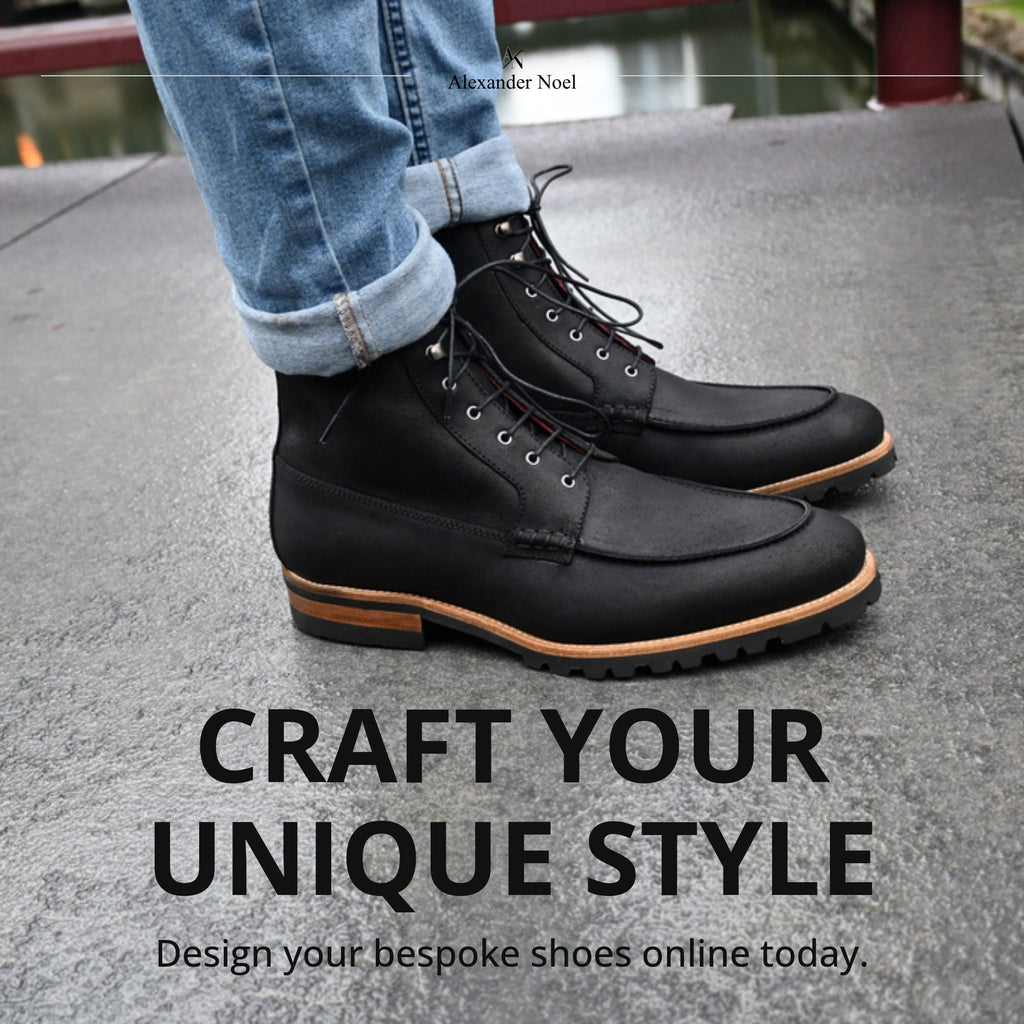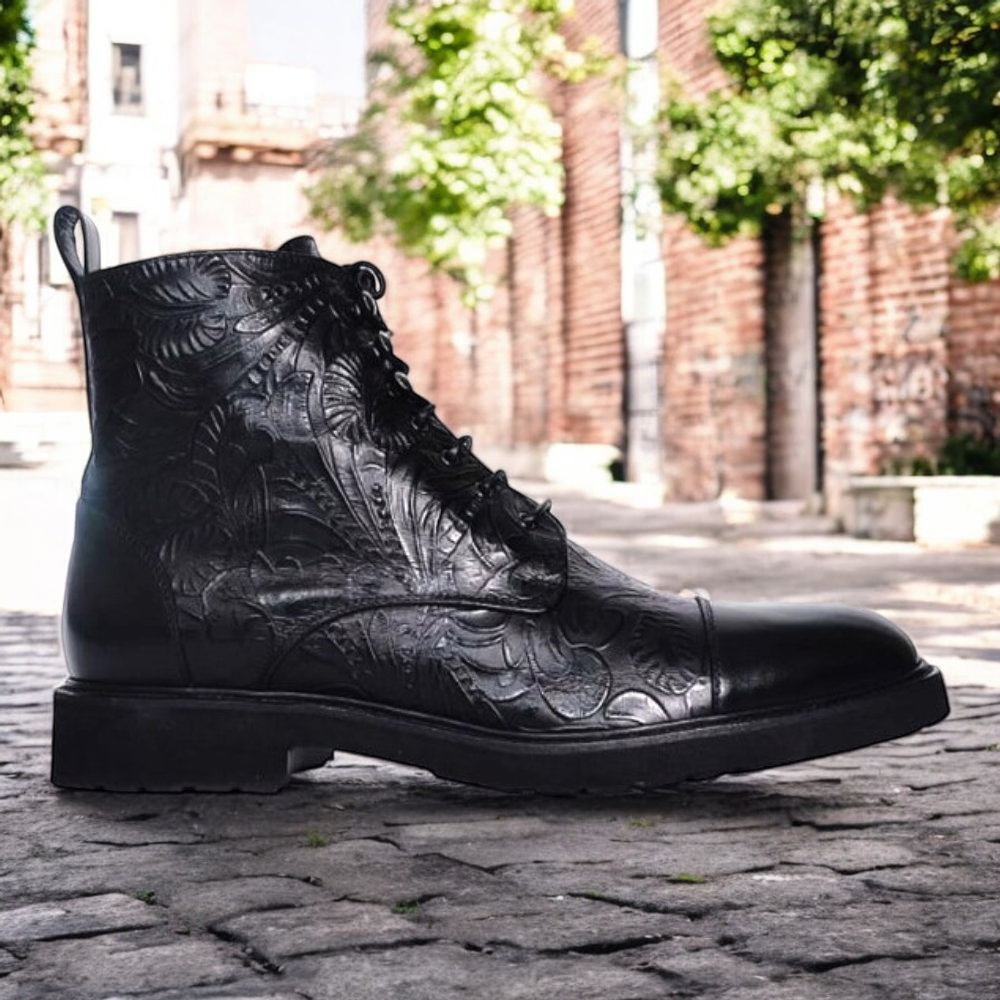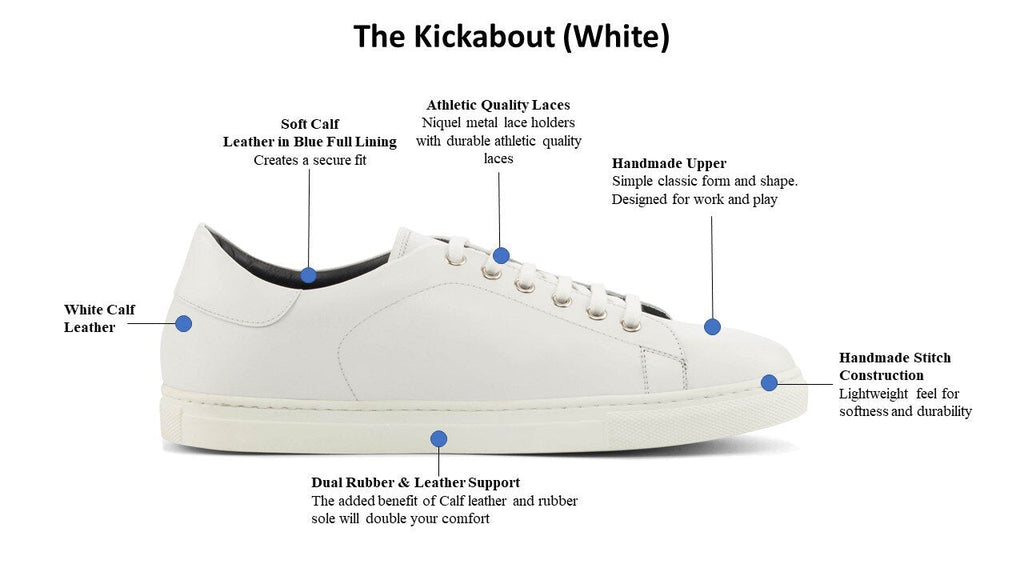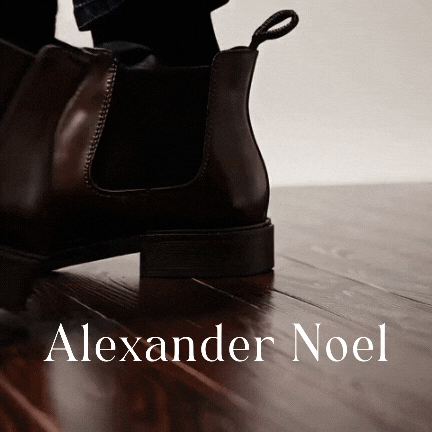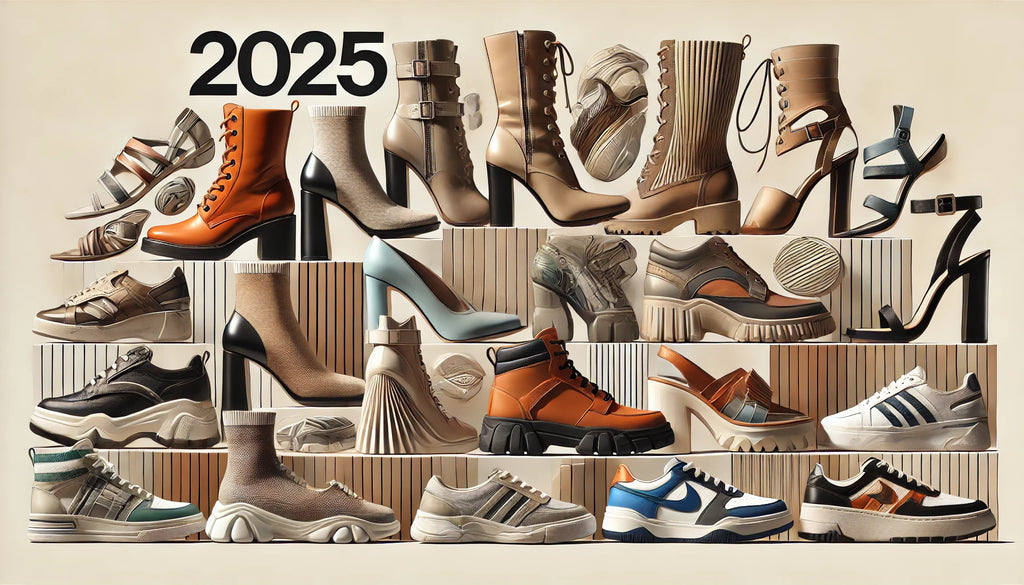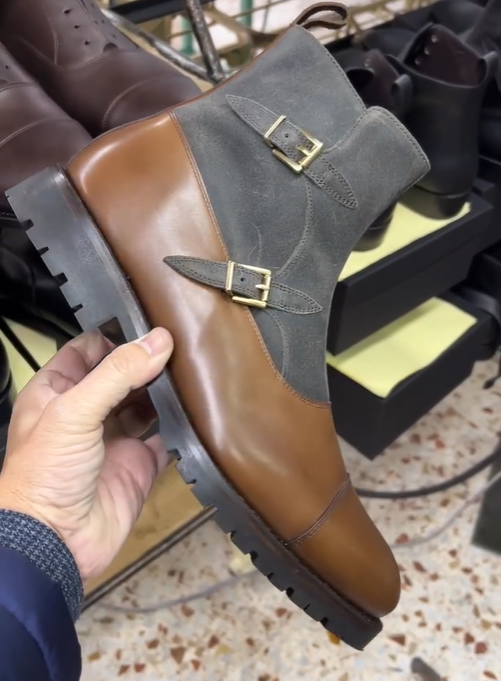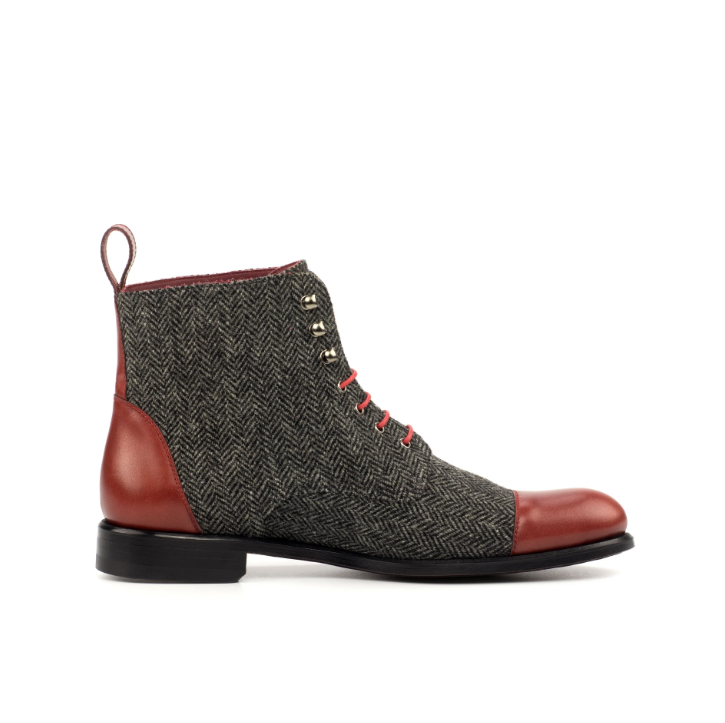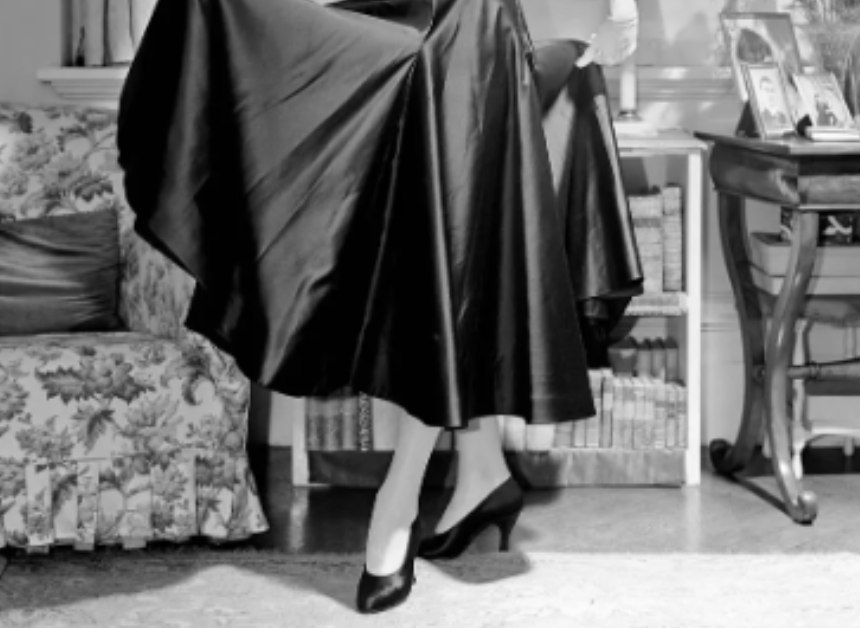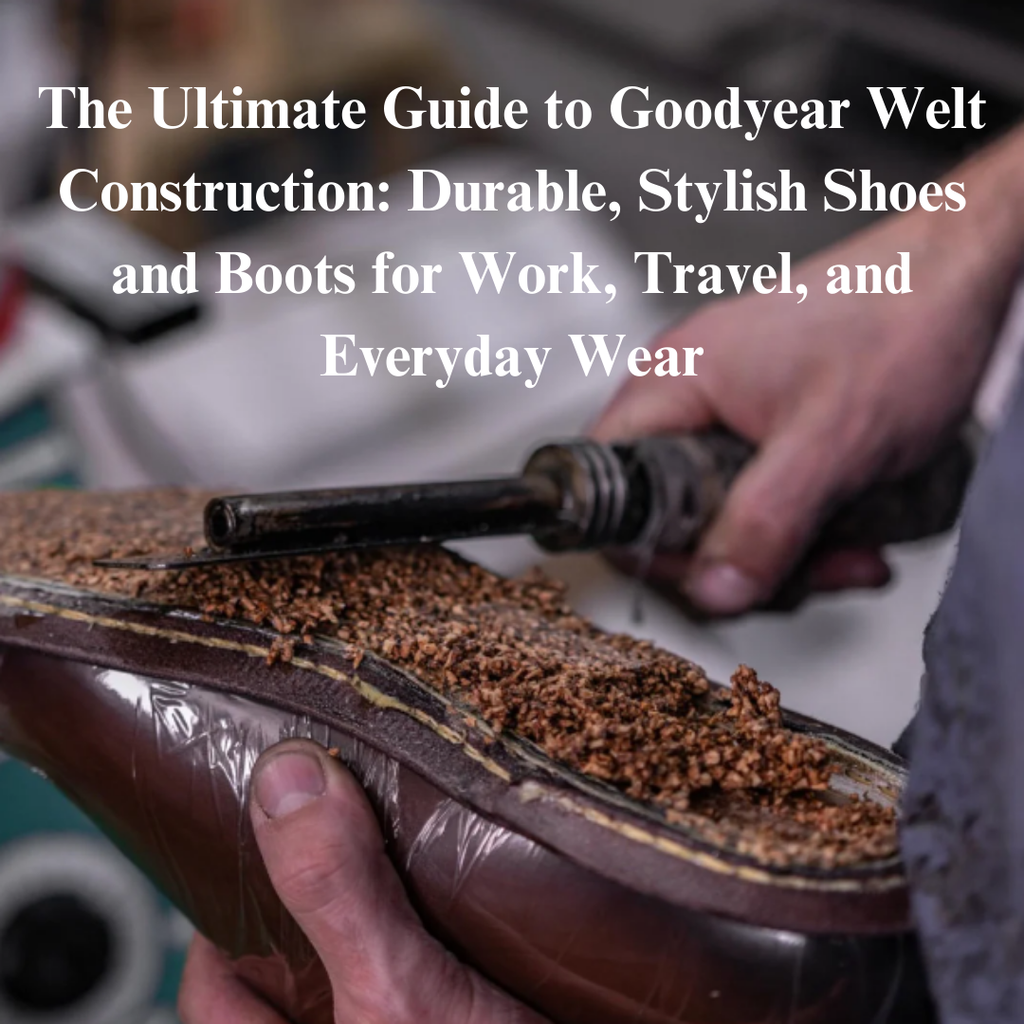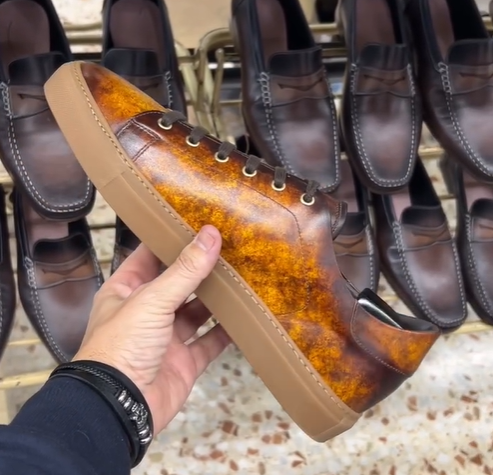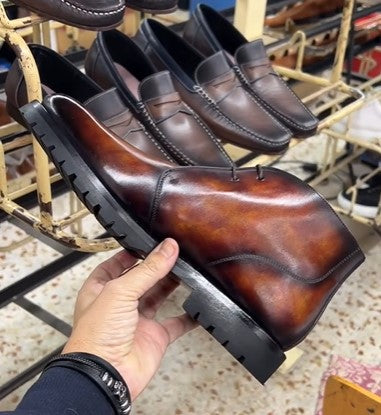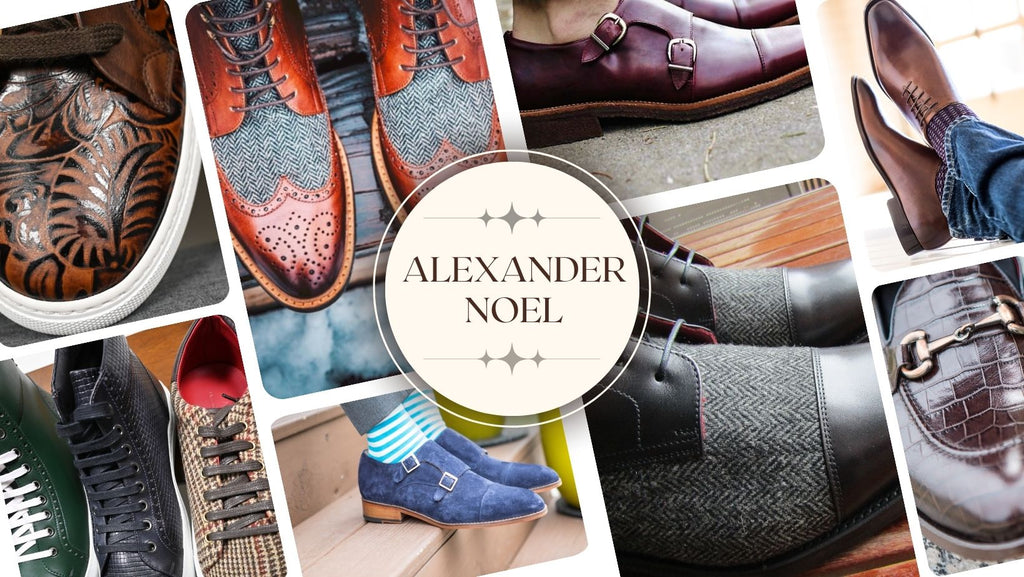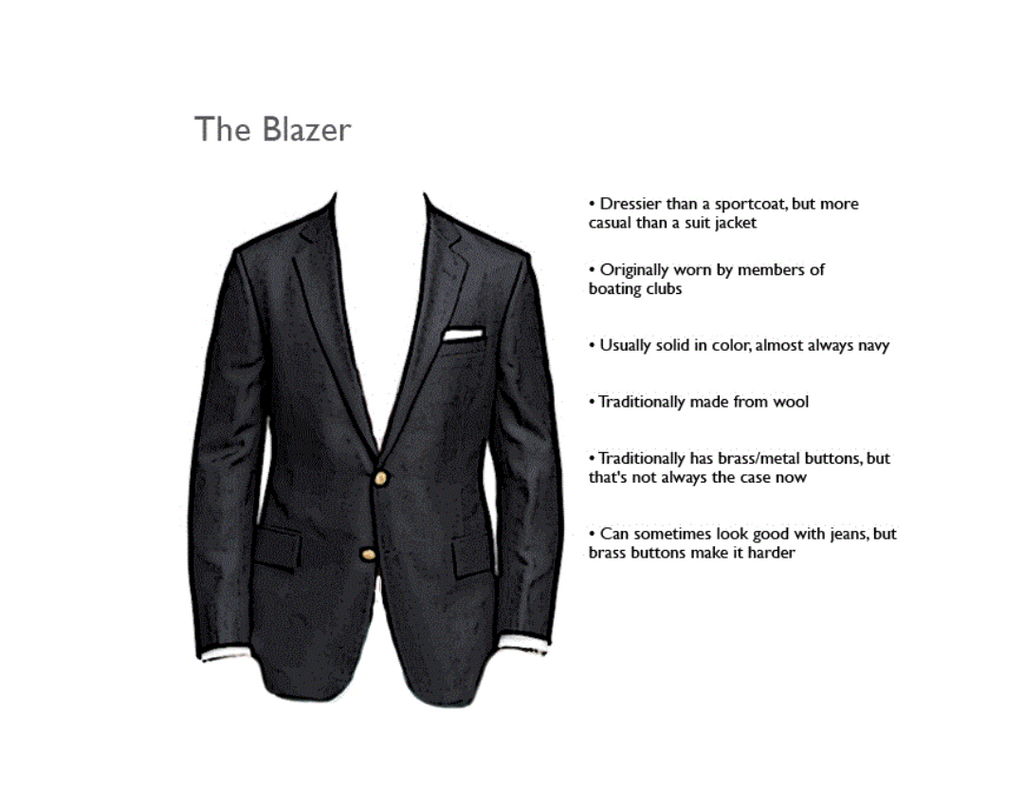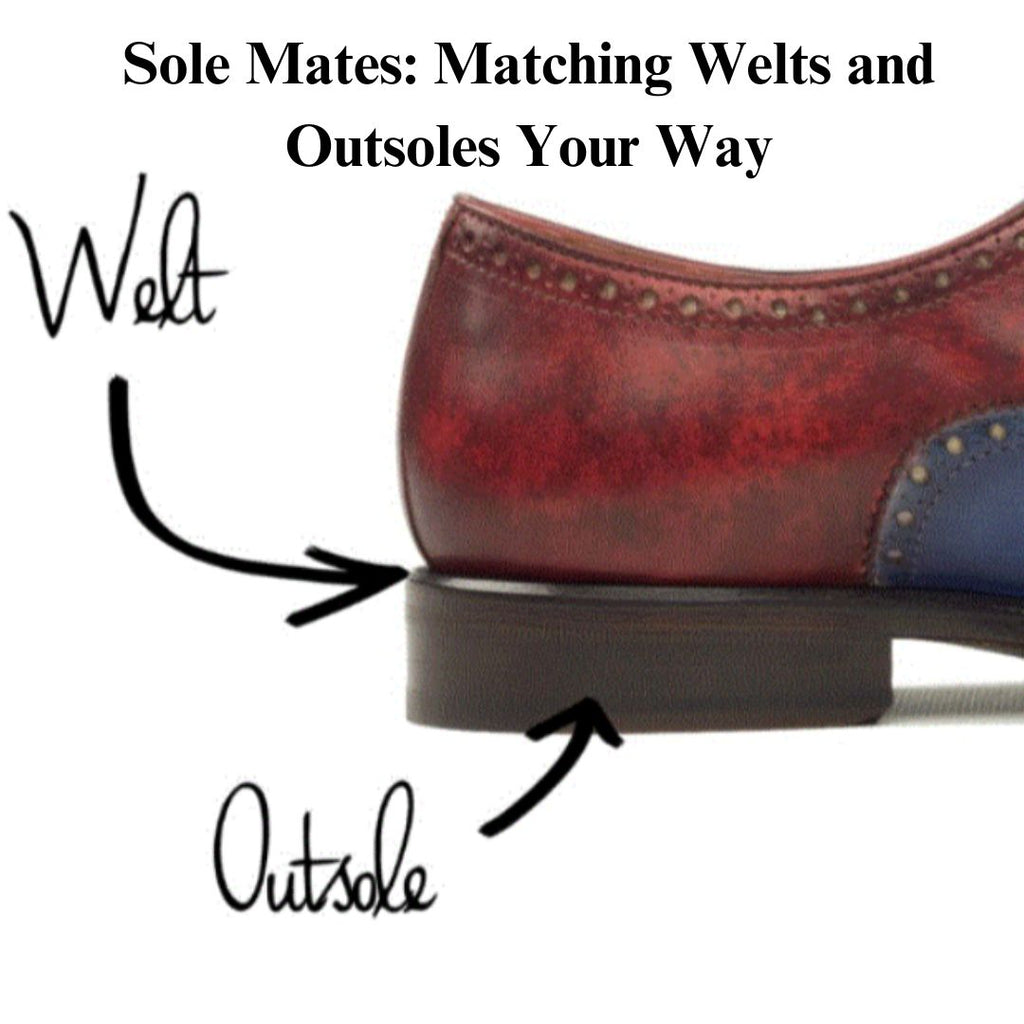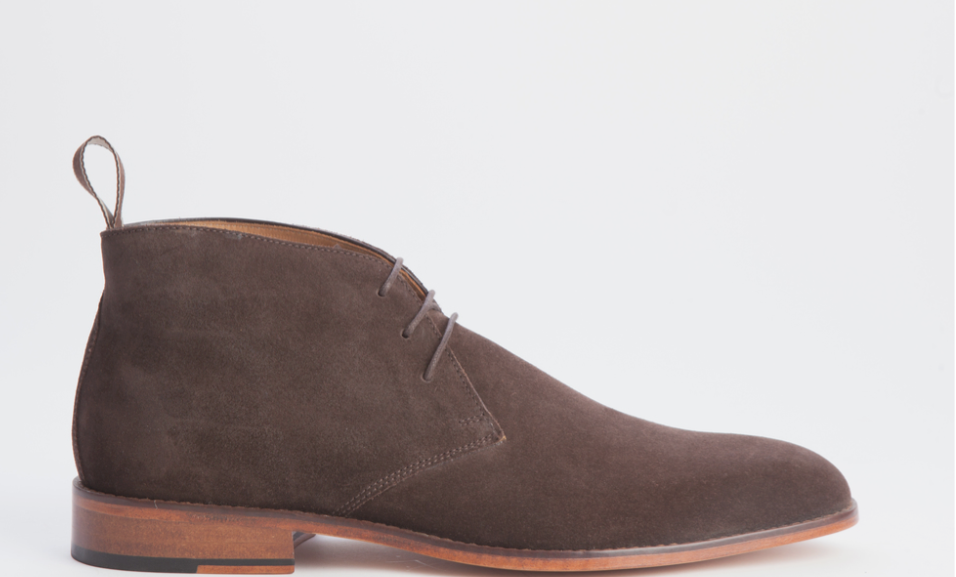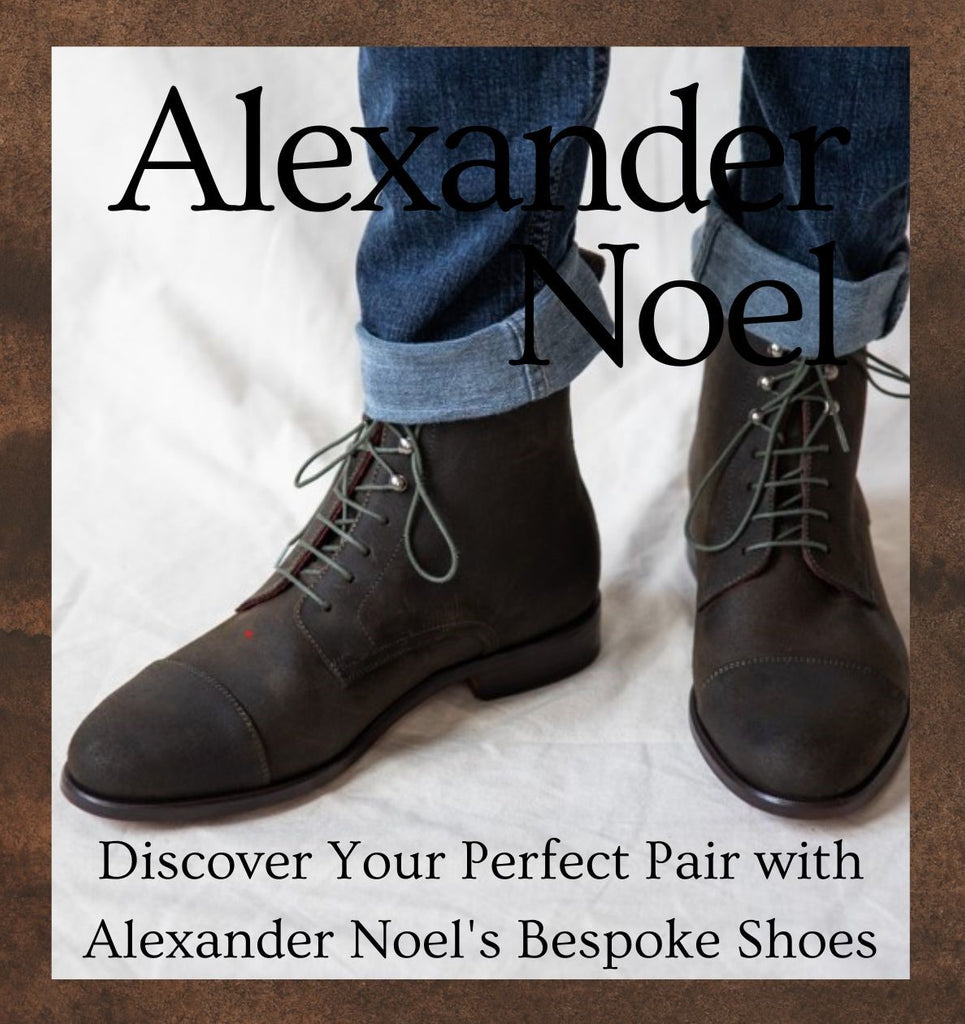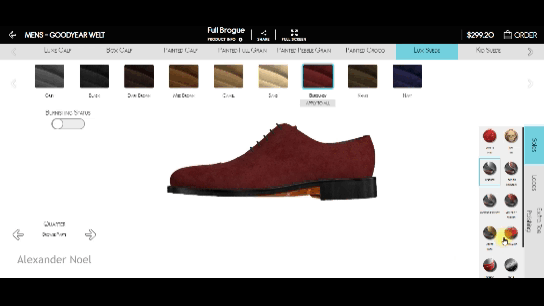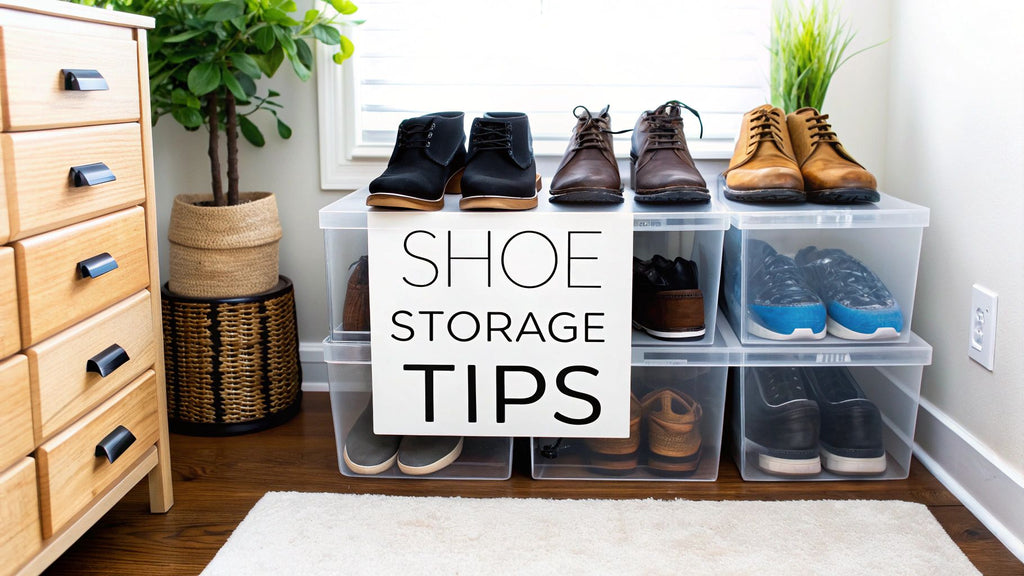
How to Store Shoes Properly: An Expert's Guide to Protecting Your Footwear

Properly storing your shoes is a simple habit, but it's one that pays dividends in preserving the craftsmanship you invested in. It all comes down to three core principles: cleaning them after wear, using shoe trees to maintain their form, and finding a cool, dry spot with good airflow. This straightforward routine is your best defense against damage like unsightly creases, material breakdown, and discoloration, ensuring your favorite pairs—from bespoke designs to everyday staples—last for years to come.
Why Proper Shoe Storage Is Non-Negotiable

Let's be honest—we've all been guilty of kicking off our shoes and leaving them in a heap by the door. It happens. But thinking about shoe storage as more than just tidying up is a game-changer. It’s an act of respect for the craftsmanship and artistry you chose to invest in. Think of it as the final, crucial step in honoring the work of the artisans—from our global partners to our in-house teams—who brought your footwear to life.
When you just toss your shoes aside, real damage occurs. A pile-up can lead to crushed heel counters, permanent creases on beautiful leather, and misshapen silhouettes that completely ruin the shoe's intended structure. For a pair of custom loafers from our Design Lab or those limited-edition sneakers you hunted down, that's not just wear and tear—it's a premature end to their story.
Protecting Your Investment
Thoughtful storage is a direct line to preserving your footwear's value and extending its lifespan. Every pair, whether it’s a custom-designed stiletto or a handcrafted boot, is born from meticulous skill, quality materials, and innovative design. Protecting them means you’re preserving that integrity.
- Maintains Shape: It stops the toe box and heel from collapsing, which is the first thing to go with sloppy storage.
- Preserves Materials: This is how you protect leather from cracking, suede from fading, and delicate fabrics from weakening over time.
- Prevents Damage: It’s the easiest way to avoid scuffs, deep scratches, and color transfer from shoes rubbing against each other.
This shift in mindset toward preservation isn't just a niche idea anymore; it's catching on. The global shoe storage market hit a value of USD 5.2 billion in 2023 and is only expected to grow. This tells us that people are finally understanding that good storage prevents everything from warped soles to cracked leather and even mildew.
Storing your shoes correctly is just as important as cleaning and conditioning them. It's the resting phase where the materials recover, ensuring they are ready for their next journey with you.
Ultimately, great storage is the perfect partner to great maintenance. While this guide is all about the "how-to" of storage, getting the full picture is key. You can learn how cleaning and storing work hand-in-hand to keep your footwear pristine by checking out our ultimate shoe care guide.
Your Daily Ritual for Preserving Footwear
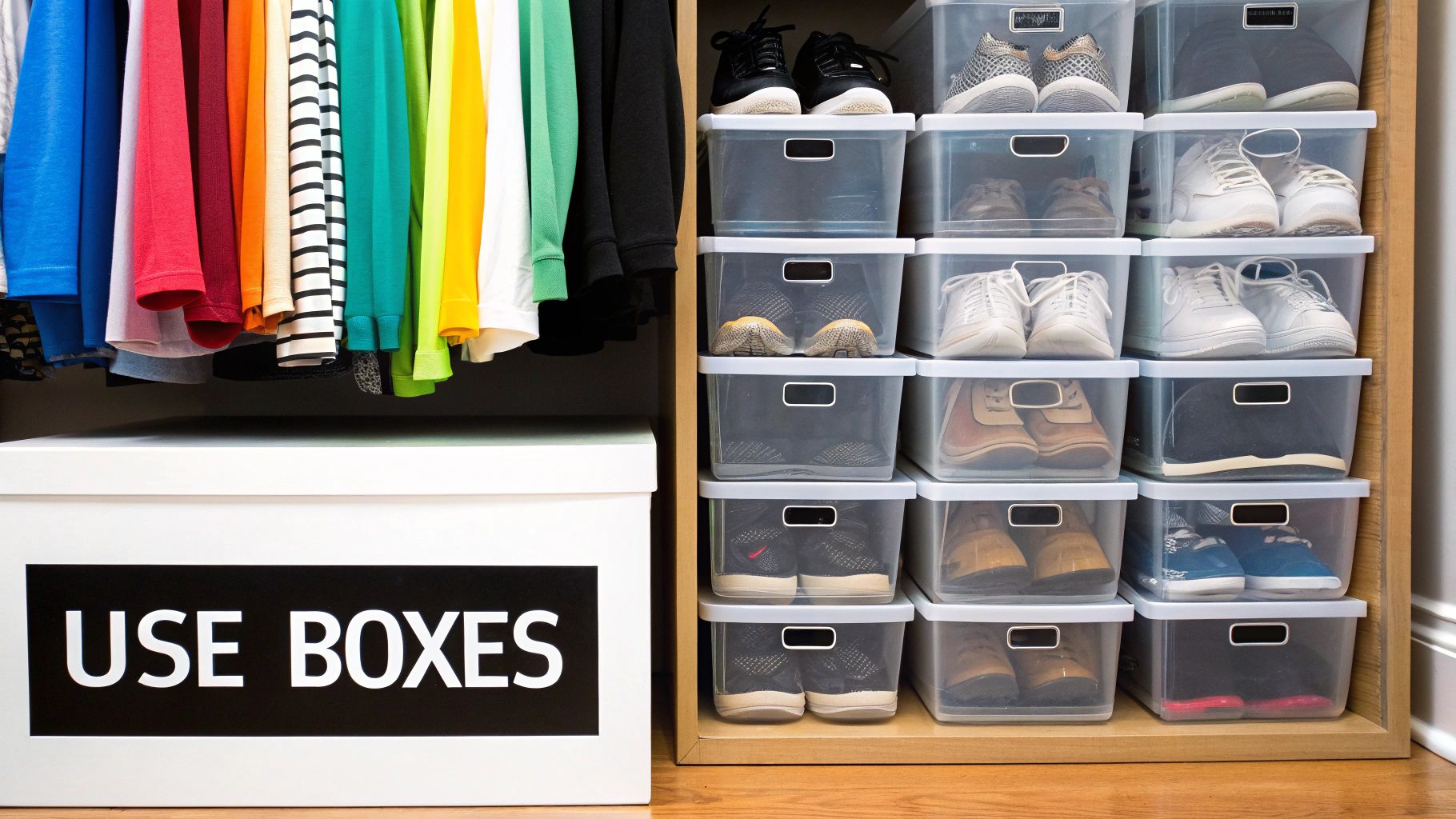
Truly great shoe care, the kind that respects the artisan's work, isn't about some grand, complicated process. It’s built on simple, consistent habits. And the most important routine starts the second you take your shoes off.
This small post-wear ritual is the foundation for everything that follows. It's how you truly preserve the personalized footwear you love.
The first, non-negotiable step? Let your shoes breathe.
Throughout the day, your feet naturally release moisture that gets soaked up by the shoe's lining and materials. If you just toss them straight into a box or a cramped closet, you're trapping that dampness. This creates a perfect storm for unpleasant odors and, even worse, material breakdown.
Just leave them out in an open, airy spot for a couple of hours. That's it. This simple act allows that trapped moisture to evaporate completely before they get put away, preventing the fine leathers and innovative fabrics from degrading from the inside out.
The Power of a Quality Shoe Tree
Once your shoes have had a chance to air out, it's time to bring in the single most important tool in your arsenal: a quality shoe tree. Don't think of it as an optional accessory. It’s essential equipment for every single pair of well-made shoes you own, from your best dress shoes to your favorite premium sneakers.
A properly fitted shoe tree does two critical jobs at once:
- Maintains Shape: It provides just the right amount of gentle pressure from the inside, smoothing out the day's creases and supporting the original structure of the toe box and heel. This is what stops a shoe from collapsing or deforming over time.
- Absorbs Moisture: Unfinished cedar shoe trees are the undisputed gold standard here. Cedar naturally wicks away any leftover moisture, giving the leather and lining an extra layer of protection. Plus, it leaves behind a subtle, fresh scent.
Skipping shoe trees is one of the quickest ways to cut a shoe's lifespan short. You’re essentially letting deep creases become permanent and allowing the whole silhouette to warp. It’s a small investment that pays huge dividends in protecting the larger one you made in your footwear. This principle holds true across all kinds of materials, including the innovative ones used in sustainable footwear. If that's a topic that interests you, we've explored it further in our guide on making the case for vegan shoes and sneakers.
The daily habit of using a shoe tree is the closest you can get to resetting your shoes to their original form after each wear. It is the active step in passive storage.
Daily vs Long-Term Storage Essentials
To keep your shoes in top condition, it's helpful to distinguish between what they need after each wear versus what they need when being put away for the season. This quick comparison breaks down the core actions for both scenarios.
| Action | Daily Storage (After Each Wear) | Long-Term Storage (Seasonal) |
|---|---|---|
| Cleaning | Quick wipe-down to remove surface dirt and dust. | Thorough cleaning and conditioning. |
| Airing Out | Crucial. Let shoes breathe for a few hours. | Essential. Ensure they are 100% dry. |
| Shape | Insert cedar shoe trees immediately after airing. | Keep shoe trees in for the entire storage period. |
| Protection | Store on an open rack or shelf. | Place in breathable dust bags or original boxes. |
| Environment | Away from direct sunlight and heat sources. | A cool, dark, and dry closet or storage area. |
While this table provides a great starting point, remember that the goal is always the same: protect your investment from the elements and from losing its shape.
This focus on daily care is a universal principle, even if specific storage solutions vary depending on climate or living space. The fundamentals of preventing damage from humidity, deformation, and dust are constant. In fact, neglecting these basics can slash a shoe's potential lifespan by up to 30%. By adopting this simple daily ritual, you're not just storing shoes—you're actively honoring their craftsmanship and ensuring they last.
Choosing Storage That Fits Your Collection and Space
Alright, let's get into the hardware. Finding the perfect home for your footwear is a deeply personal choice. You're balancing the size of your collection, the realities of your living space, and of course, your own sense of style. The right choice does more than just organize; it honors your investment in custom, handcrafted shoes and turns simple storage into a thoughtful display of craftsmanship.
Ultimately, your decision boils down to a trade-off between visibility, protection, and ventilation. There's no single "best" way to do it. The ideal setup is one that fits your life and keeps your shoes in top condition.
Open vs. Enclosed Storage
The first, most fundamental choice you'll make is whether to go with an open or enclosed solution.
Open racks are fantastic for airflow. They let your daily-wear shoes breathe and air out properly after you take them off. They also keep your collection right there in front of you, which is perfect for a quick grab-and-go morning. The downside? They offer zero protection from dust, pet hair, or that accidental scuff from a passing vacuum cleaner. I find they work best for high-rotation footwear—think of your favorite street sneakers or those artisan boots you wear a few times a week.
Enclosed options, like drop-front boxes or cabinets, are all about protection. They shield your footwear from dust and light, which is absolutely critical for preserving delicate materials like suede and preventing colors from fading over time. Clear, stackable boxes have become a popular middle ground, giving you that protection while still letting you see what's inside. If you're looking for furniture pieces, you can find a stylish bench and shoe storage solution that pulls double duty, elegantly combining form and function in an entryway.
The big catch with enclosed storage is trapped moisture. It's so important to make sure your shoes are completely dry before you put them away. Sealing them in a box or cabinet while they're still damp is a recipe for mildew.
Custom Cabinetry and Bespoke Solutions
For the true connoisseur with a serious collection, nothing beats custom cabinetry. It’s the ultimate in personalized storage. Much like our Design Lab allows you to create your perfect shoe, bespoke joinery lets you build a storage system tailored to your exact collection. Imagine slanted shelves perfectly sized for stilettos or dedicated cubbies for each pair of your WIRA luxury sneakers.
When you go custom, you get to control every last detail:
- Ventilation: You can build in discreet vents or slatted doors to keep the air moving.
- Lighting: Integrated, low-heat LED lighting can turn your collection into a stunning display without damaging the materials.
- Material Choice: You get to select woods and finishes that perfectly complement your home’s decor.
This growing desire for smarter, more integrated storage isn't just a niche interest; it's part of a much bigger trend. The global market for shoe organizers is expected to jump from USD 2.5 billion to over USD 4.1 billion by 2033. This growth is all about the need for solutions that both save space and protect valuable footwear. You can dive deeper into the numbers in this detailed report.
At the end of the day, the best way to store your shoes is to pick a system you’ll actually use. It needs to fit the unique demands of your footwear—whether that’s an airy rack for your daily drivers or a protective, climate-controlled case for a cherished custom pair.
Advanced Storage Methods for Different Materials
A beautifully crafted suede loafer doesn't share the same needs as a rugged leather boot or a breathable canvas sneaker. Knowing how to store your shoes properly means adapting your approach to the unique personality of each material. This is where a real appreciation for craftsmanship and modern innovation pays off, allowing you to give every single pair the thoughtful care it deserves.
Let's move beyond the basics and dive into the specialized techniques that protect the soul of different materials. This isn’t just about being tidy; it’s about active, hands-on preservation.
Preserving Fine Leathers
Full-grain and premium leathers, like those we source from our artisan partners for our custom dress shoes, demand structure and breathability to age with grace. Their greatest enemies are moisture, extreme dryness, and pressure. I always, always recommend using unvarnished cedar shoe trees. They’re non-negotiable for maintaining shape and absorbing any lingering moisture from a day's wear.
Whatever you do, avoid storing fine leather in plastic bags or airtight boxes. This is a classic mistake. It traps moisture right against the leather, which can lead to mildew and, over time, literally cause the material to rot. Instead, tuck them into soft, breathable fabric dust bags and give them their own space on a shelf so they aren’t crushed or scuffed by other pairs.
Think of leather like skin—it needs to breathe. Suffocating it in plastic is one of the fastest ways to undo the work of the artisan who crafted it.
Caring for Suede and Nubuck
Suede and nubuck are notoriously delicate. Their beautiful, napped texture is a magnet for dust, dirt, and moisture—all things that can quickly ruin their look and feel. With these materials, your main focus has to be on protection.
- Guard Against Dust: Always keep your suede and nubuck shoes in a dust bag or a covered box. Even a little dust can work its way deep into the fibers, becoming almost impossible to get out.
- Prevent Moisture Damage: Make absolutely sure they are completely dry before putting them away. If they do get damp, let them air dry naturally, far away from any direct heat source like a radiator.
- Maintain Their Shape: A good shoe tree is your best friend here. If you don't have one, stuffing them with acid-free tissue paper also works well to keep them from collapsing and creasing.
Since these materials are so sensitive to their surroundings, maintaining the right environment is everything. Learning some effective cabinet humidity control tips can be a game-changer in preventing damage and keeping them pristine.
Storing Athletic and Casual Sneakers
Your high-performance athletic kicks and stylish everyday sneakers need their own kind of care. The number one priority here is tackling the bacteria and odor that inevitably build up from sweat and constant activity.
The most critical step is ensuring they are bone-dry before you even think about putting them away. I pull the insoles out and let everything air out separately for at least 24 hours. You can speed things up by stuffing them with newspaper for a few hours (but don't leave it in for long-term storage) or using a specialty sneaker dryer. This simple habit prevents odor-causing bacteria from taking hold and preserves the complex, modern materials used in their construction.
To truly protect your footwear, you need to understand how to store each material properly. This table breaks down the essentials.
Material-Specific Storage Guide
| Material | Key Storage Priority | Best Storage Method | What to Avoid |
|---|---|---|---|
| Smooth Leather | Maintaining shape, breathability | Cedar shoe trees, fabric dust bags, open shelves | Plastic containers, direct sunlight, moisture |
| Suede/Nubuck | Protection from dust and moisture | Dust bags or covered boxes, tissue paper stuffing | Open air exposure, damp environments, harsh brushing |
| Athletic Sneakers | Air circulation, odor prevention | Open racks or shelves, airing out after wear | Stacking, enclosed bins without ventilation, storing while damp |
| Canvas/Fabric | Preventing discoloration and dirt | Cool, dry place, spot cleaning before storage | Humid areas, long-term exposure to direct light |
Following these material-specific guidelines is the difference between a shoe that lasts a season and one that becomes a long-cherished part of your collection.
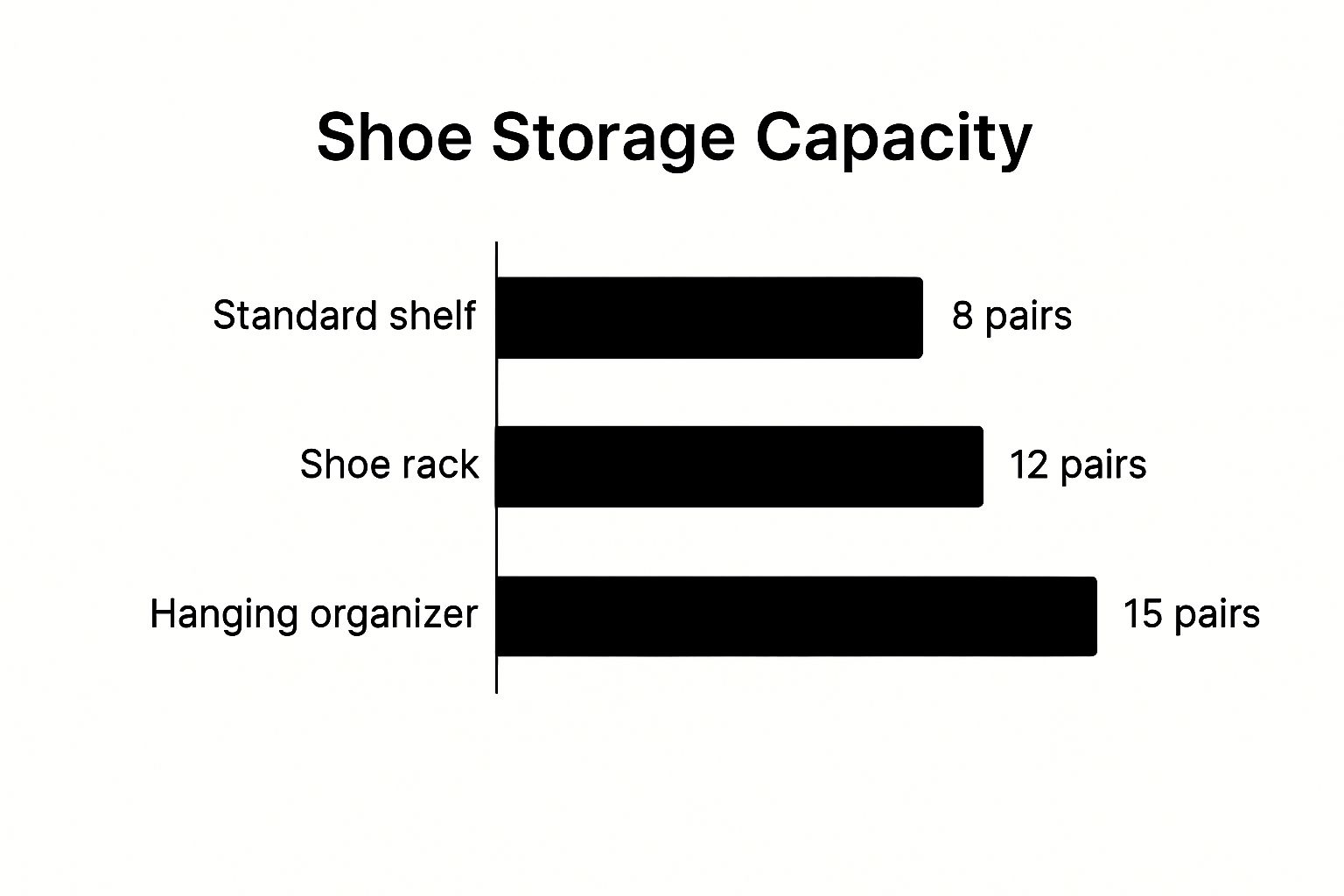
As you can see, different solutions offer different benefits. Hanging organizers are fantastic for maximizing space, but racks and shelves provide that crucial air circulation—something that’s absolutely vital when you’re dealing with the specific needs of fine materials.
Preparing Shoes For Long-Term And Seasonal Storage
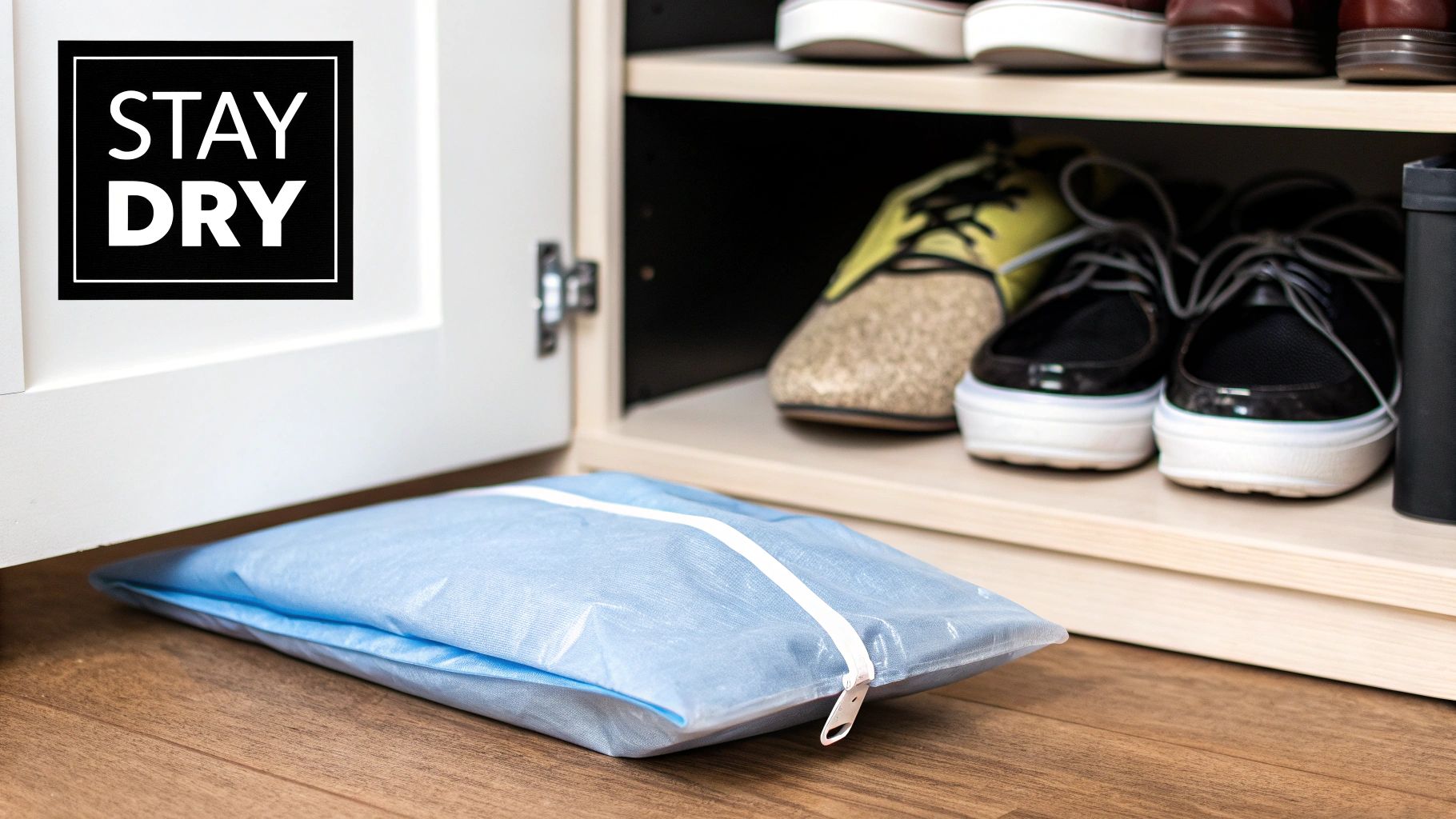
When the seasons change, so does what's on our feet. The ritual of packing away winter boots or summer sandals isn't just about tidying up; it's about proper preservation. This is a crucial process to make sure your favorite footwear comes out of hibernation looking just as good as when you put it away.
Before a single shoe goes into storage, it needs a thorough cleaning. Don't skip this. That road salt, hidden dirt, or faint stain might seem harmless now, but over months in a dark box, it can set in, causing permanent discoloration and even damaging the material itself.
Take a moment to clean each pair according to its specific needs. For your fine leather shoes, this is also the perfect opportunity to work in a quality conditioner. It’s a vital step that feeds the leather, stopping it from drying out and cracking while it rests.
Ensuring They Are Perfectly Dry and Supported
Putting shoes away while they’re still damp is probably the worst mistake you can make. I’ve seen it happen. Even a tiny bit of moisture, whether from cleaning or just the last time you wore them, creates a perfect home for mildew and mold, which will ruin the integrity of your shoes.
After you've cleaned and conditioned them, give your shoes plenty of time to air out in a well-ventilated space. I recommend at least 24-48 hours to be safe.
Once they're completely dry, you need to focus on keeping their shape. This is where your prep work really pays off.
- Shoe Trees are Non-Negotiable: For any structured shoes—think dress shoes, loafers, or boots—cedar shoe trees are a must. Leave them in for the entire storage period. They provide the perfect tension to keep the heel and toe box from collapsing and prevent creases from becoming permanent folds.
- Stuff Them Correctly: For softer shoes or tall boots that need extra support, use acid-free tissue paper. It's breathable and won't stain the lining. Whatever you do, never use newspaper; the ink will bleed and transfer onto your shoes.
Proper preparation before storage is an investment in your footwear’s future. The 30 minutes you spend cleaning, conditioning, and stuffing your shoes now prevents months of silent, irreversible damage from occurring in a dark closet.
The final touch? Slip each pair into a breathable fabric dust bag. This keeps dust off while allowing essential air to circulate. If you’re moving them to a storage unit or packing for a trip, the same principles apply. You can find more tips for efficiently packing shoes to avoid any transit damage.
By taking these steps, you’re not just storing shoes—you’re preserving the craftsmanship and ensuring they’ll be ready for another great season of wear.
Common Questions About Shoe Storage Answered
Even with the best game plan, some practical questions always pop up. As people who live and breathe footwear, we’ve heard just about everything when it comes to the real-world dilemmas you face. We're here to answer those common hurdles with clear, straightforward advice rooted in a deep respect for craftsmanship.
Think of this as your personal troubleshooting guide to help you master the art of shoe storage.
Is It Better to Store Shoes in Their Original Boxes?
It’s tempting, I know. It seems so neat and organized. But for long-term storage, most cardboard shoe boxes are actually one of the worst places for your shoes. They’re often made with materials that attract pests and will absolutely break down over time, especially if there's any humidity.
The biggest problem, though? They suffocate your shoes. Cardboard doesn't allow for any real air circulation, which means moisture gets trapped inside—a perfect recipe for mildew.
A much smarter move is to invest in a set of clear, ventilated shoe boxes. Those drop-front containers are a game-changer. They offer far better protection, let your footwear breathe, and you get the massive practical benefit of seeing your entire collection at a glance.
This approach gives your shoes a proper home that actively preserves them, rather than just hiding them away in a cardboard coffin.
How Do I Stop My Shoes From Smelling in Storage?
Prevention is everything here, and it starts the second you take your shoes off. You should never, ever put away footwear when it's still damp from being worn all day. Let them air out for at least a few hours—ideally a full 24 hours—in an open area first.
For a truly effective strategy, keep these tools in your arsenal:
- Cedar Shoe Trees: These are your number one defense. Unfinished cedar is incredibly absorbent, naturally neutralizes odors, and pulls moisture right out of the leather and lining.
- Charcoal Sachets: For some extra odor-fighting muscle, especially with sneakers, pop an activated charcoal sachet inside each shoe. They are fantastic at absorbing stubborn smells.
- Unused Tea Bags: In a pinch, a dry, unused tea bag dropped inside a shoe can do a surprisingly good job of absorbing moisture and odor.
This is especially true for sneakers, where modern fabrics can trap odors more easily. Even as casual footwear gets more sophisticated—think of how popular stylish, high-quality sneakers have become—they still deserve the same level of care. You can read more about this evolution in our article on the trend of dress-up sneakers.
Should I Stuff My Shoes When Storing Them?
Without a doubt, yes. For any storage situation that goes beyond just taking them off overnight, stuffing your shoes is non-negotiable. It's the only way to preserve their intended shape. Without that internal support, the shoe’s structure—from the toe box to the heel—will slowly start to collapse under its own weight.
Shoe trees are the gold standard here, providing the perfect amount of tension to smooth out creases from wear. For boots or more delicate footwear like stilettos, grab some acid-free tissue paper. It’s breathable and won’t have any weird chemical reactions with the dyes or materials.
Whatever you do, don't use newspaper. The ink can easily transfer and permanently stain the lining, and the paper itself attracts moisture and will just crumble over time. Giving your shoes proper support ensures the artisan's vision for their silhouette is maintained for years.
At Alexander Noel, we see the care you give your shoes as a direct reflection of your appreciation for the craft behind them. Our philosophy marries traditional craftsmanship with modern innovation, bringing you footwear that is uniquely yours. Through our partnerships with global artisans and our powerful Design Lab, we offer an unparalleled level of personalization. We invite you to experience this commitment to fit, quality, and individual expression.


